Hi, everyone!
After Scotland, we went on to Norway! The last time I was on a fjord in Norway, it was foggy and rainy! Guess what? The same thing happened this time!
When we got to Vik, it was raining and a little foggy. I could see a waterfall from our cabin. Grandma had planned to take a walking tour there, but decided to stay in, instead! It was still raining when we went to afternoon tea. When my cabin crew friends tucked me in at bedtime, they gave me a face mask! This far north, the sun doesn’t set till way after my bedtime!
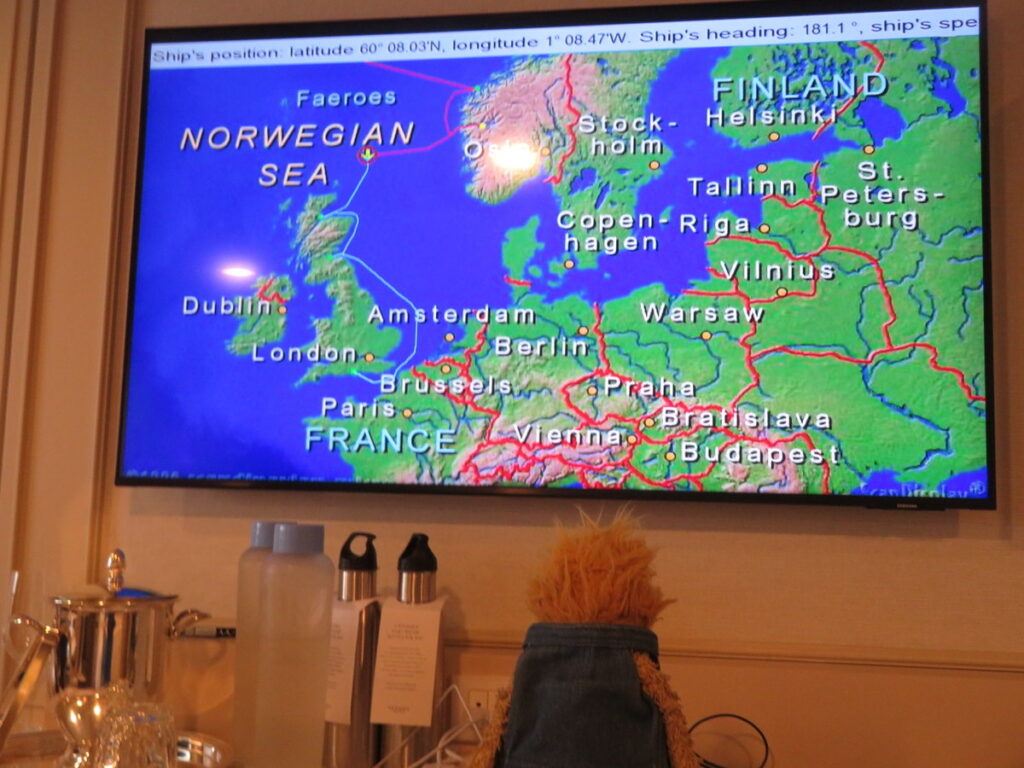
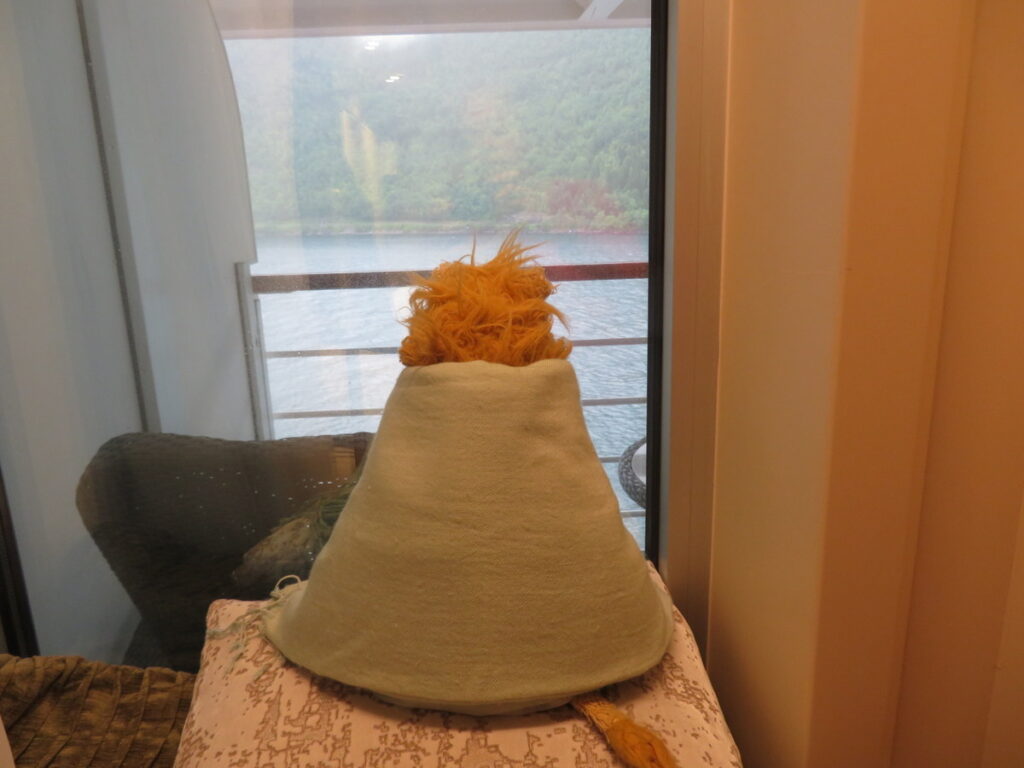
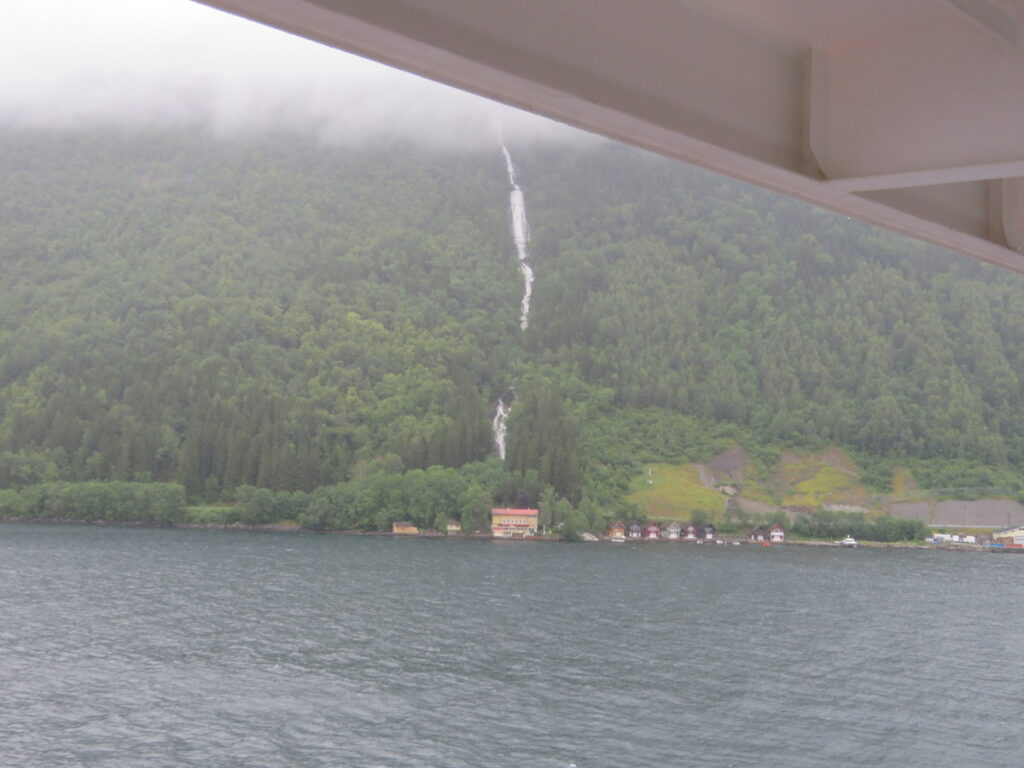
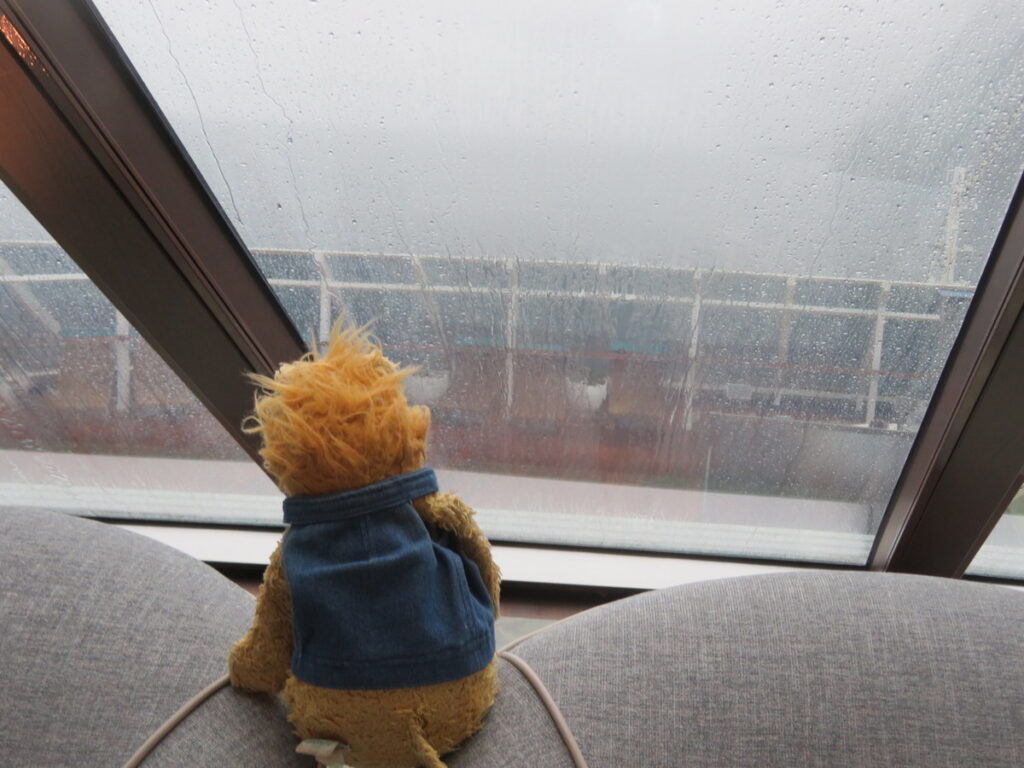
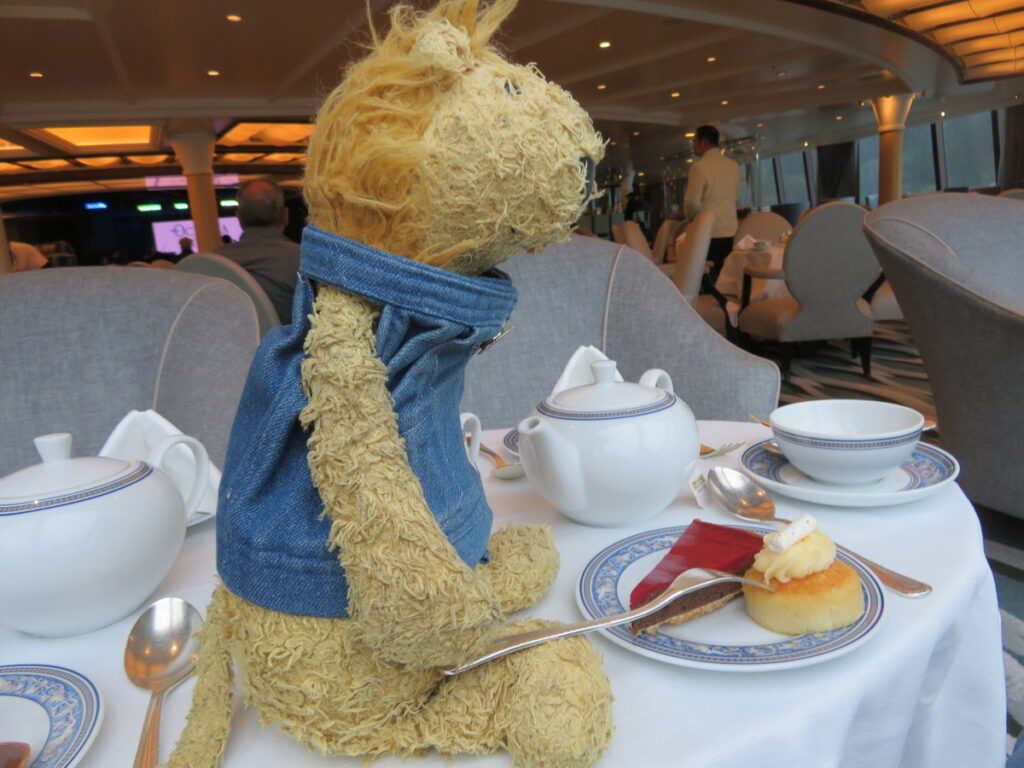
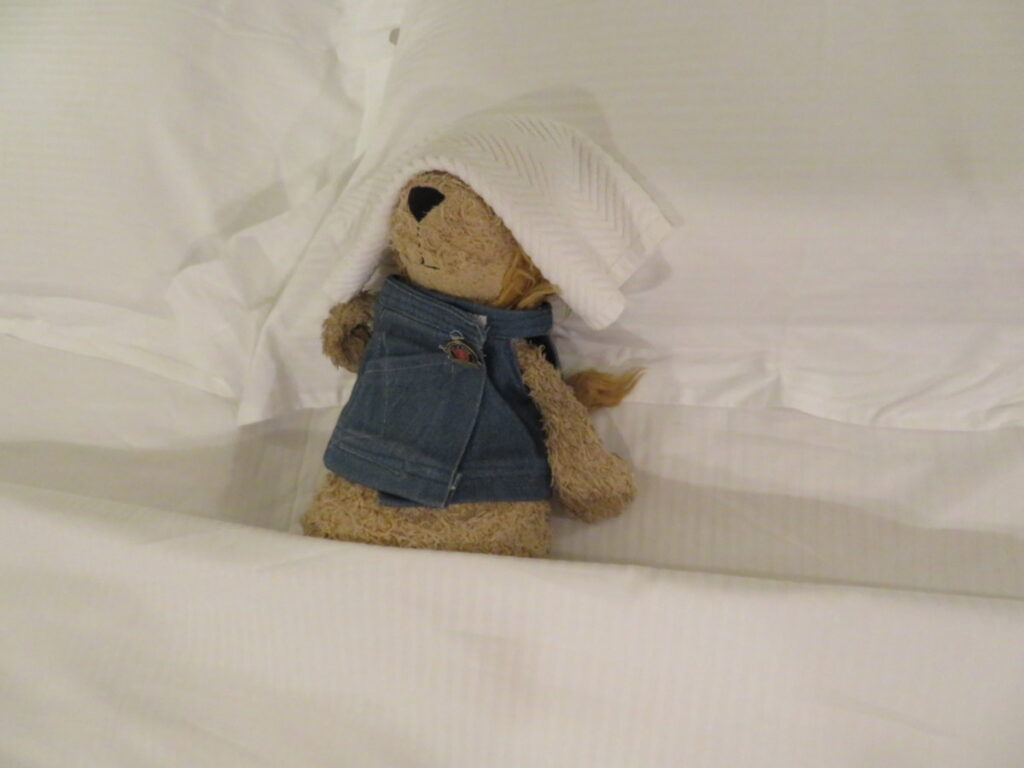
The weather was better the next day at our second Norwegian port, Alesund. That town consists of several islands. Some of them are now connected with undersea tunnels! Our bus took us on one of them to Giske island. We visited a little church that was built in the 12th century! The outside is actually marble, but it has been painted for protection. Our guide told us this was a stopping point for religious pilgrims before the Protestant Reformation. People in this area took their last name from the place they lived, so there were lots of Giskes in the burial ground!

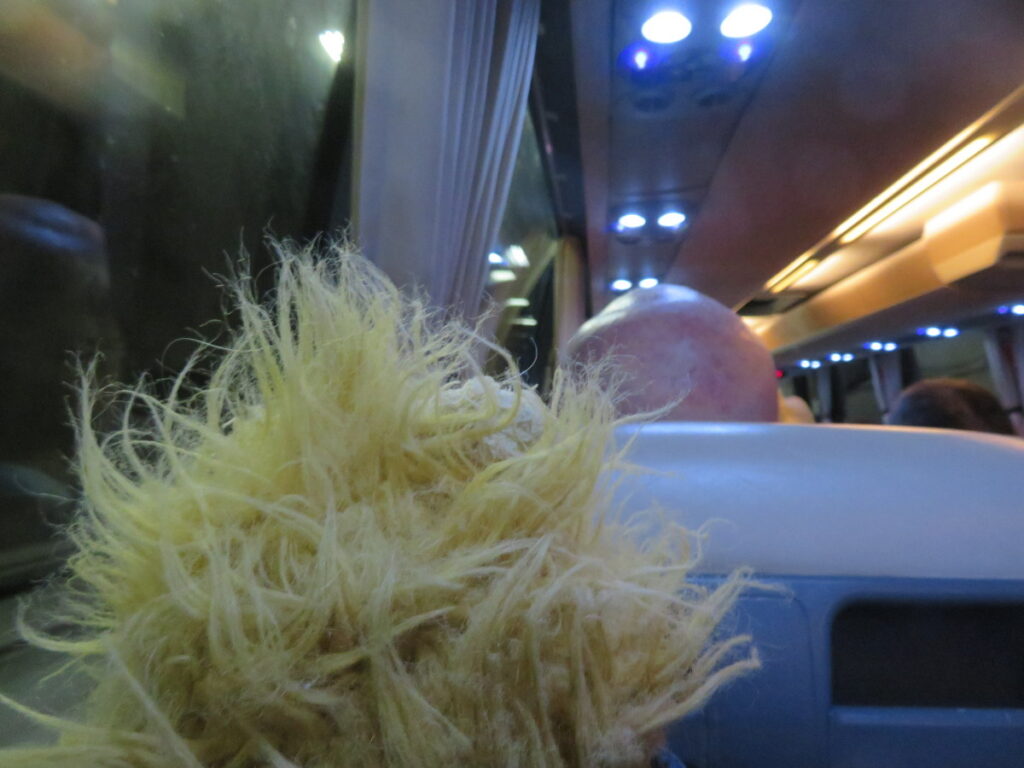
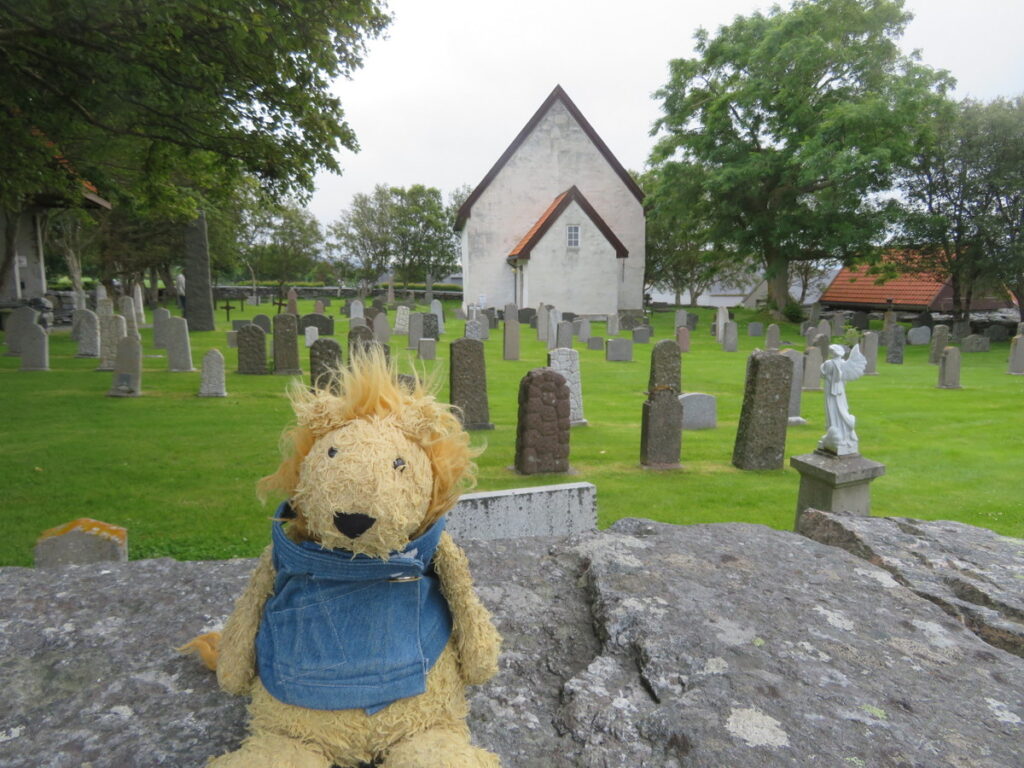
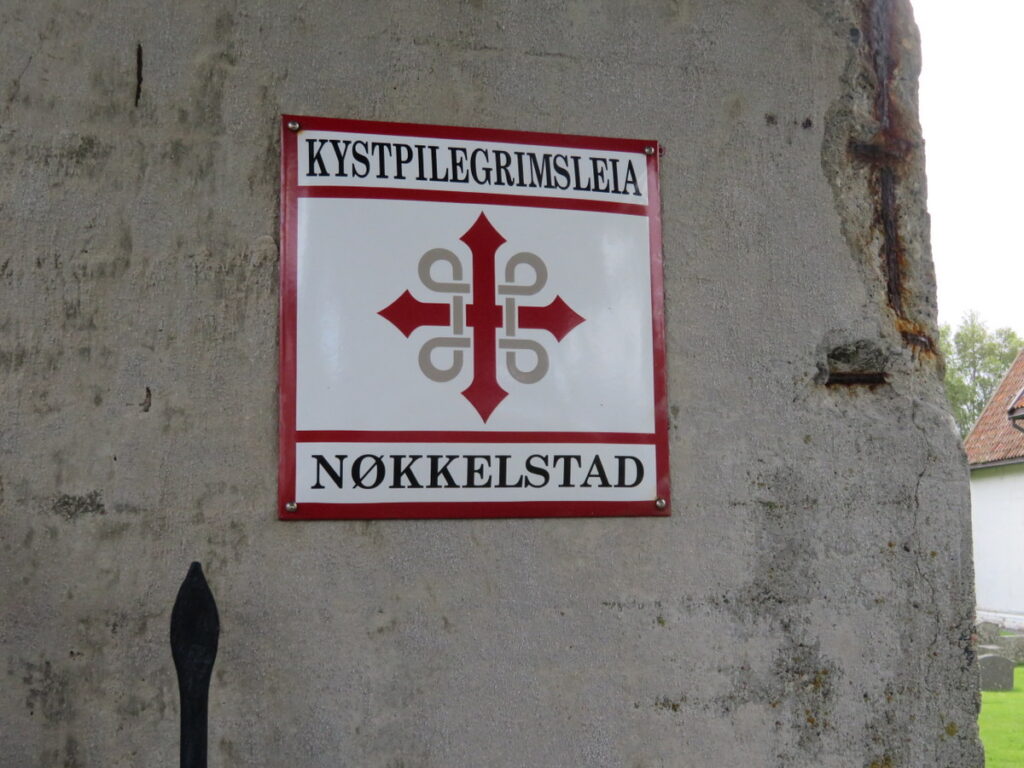
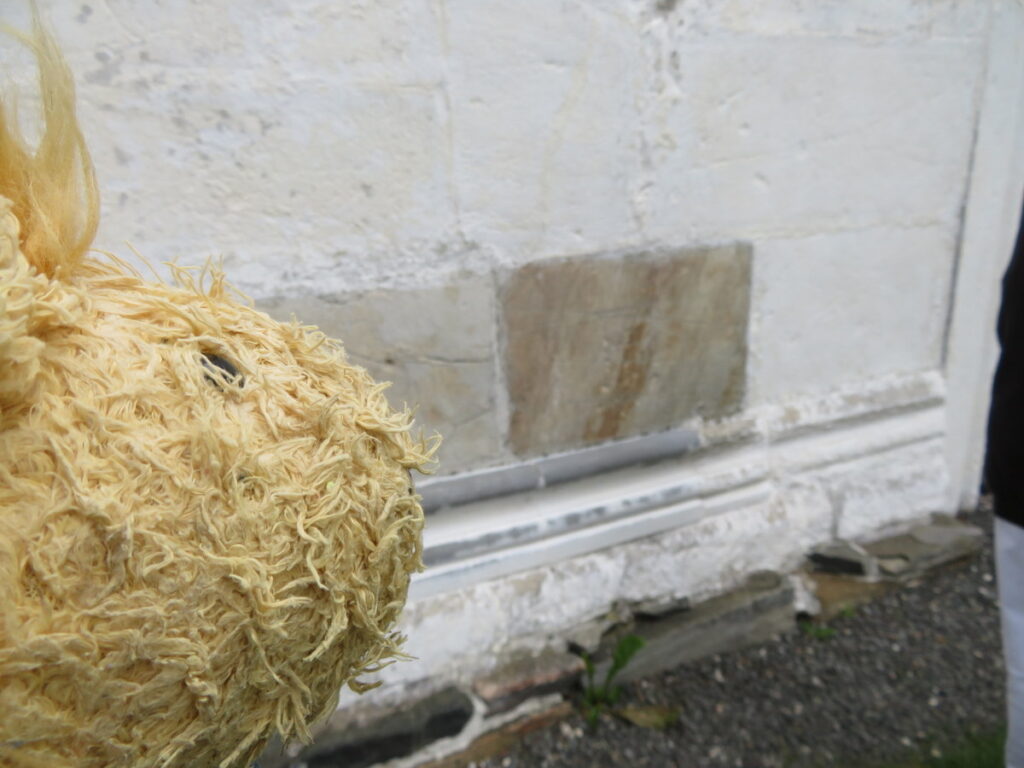
Then we visited the Sunnmore outdoor museum. Old houses and boats from all over the country have been moved here and preserved. There were lots of old boats in the boathouse. There was a replica of a Viking longboat found buried in peat. Our guide explained that it could go forward and backward easily, because both ends were the same. That made it good for quick raids along the fjords.
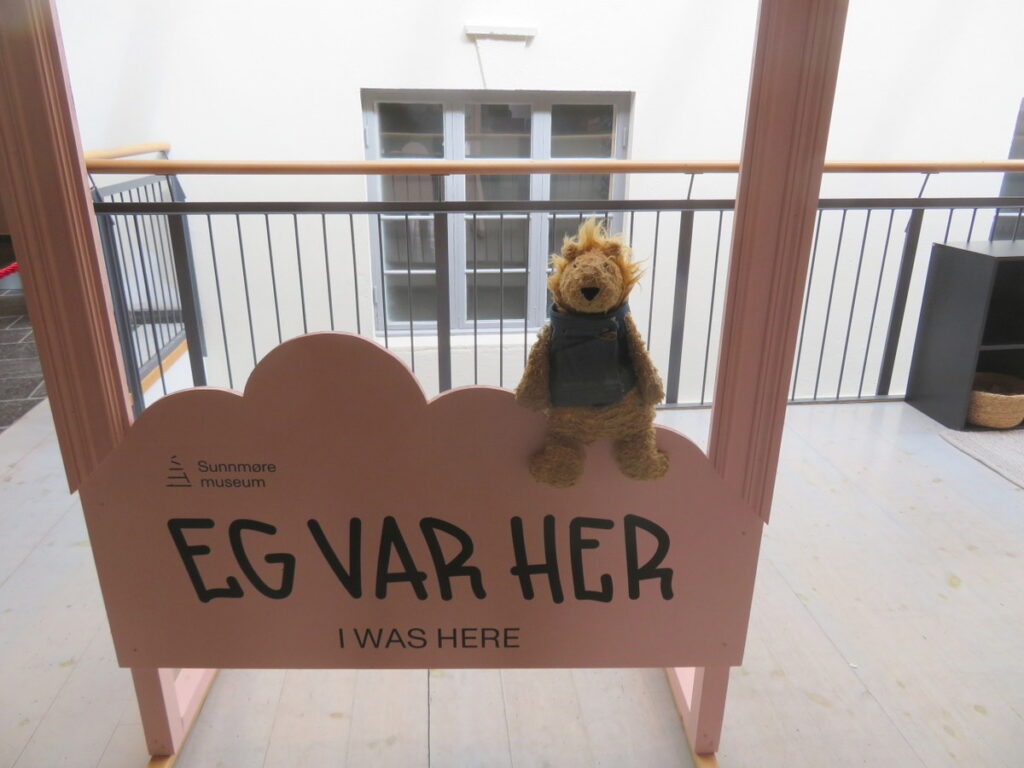

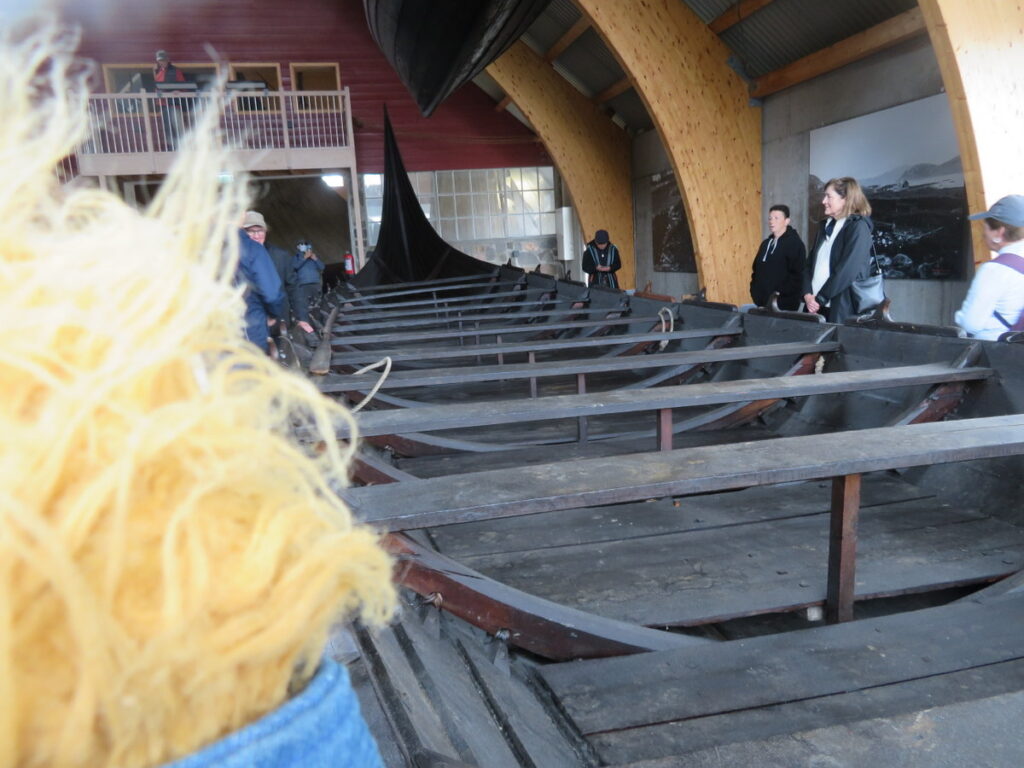
Traditional houses had turf roofs! First, there was a layer of birch bark, to stop leaks, then sod on top. There was lots of turf houses at Sunnmore and even a turf school for orphans!
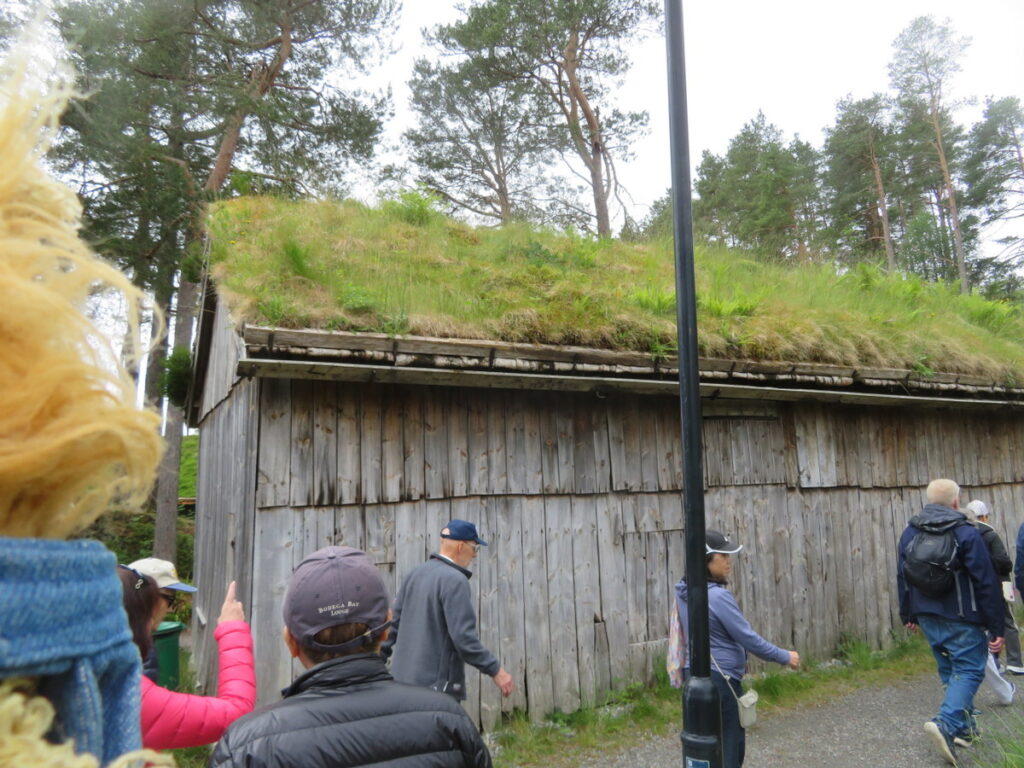
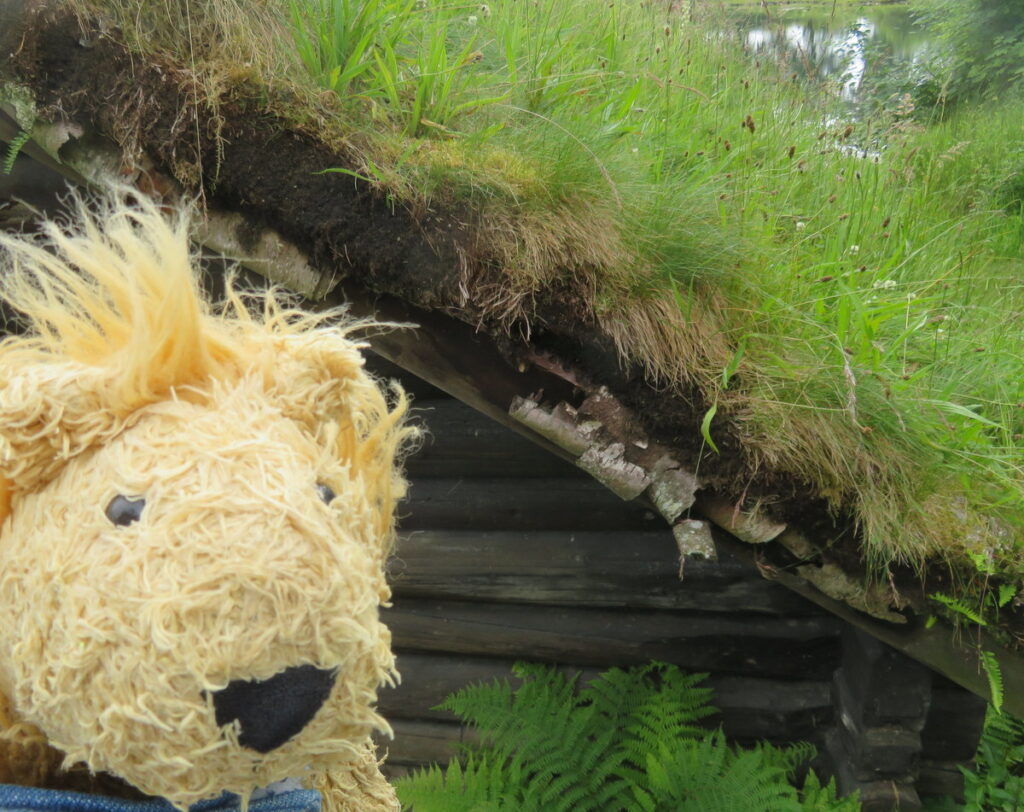
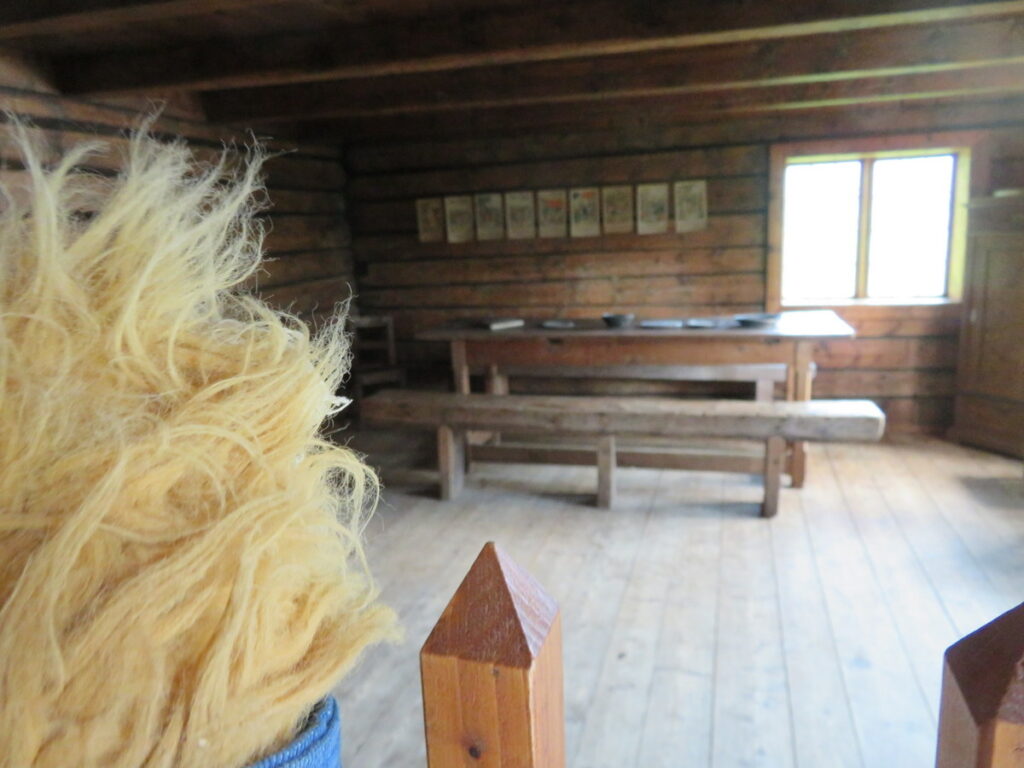
When we got back to the harbor, we stopped at a monument. Our guide told us that during World War II, the Nazis occupied Norway. Some people escaped by sailing to the Shetland Islands. The monument honors the sailors who helped people escape. He also pointed out a historic fishing boat with a great improvement: a deck, rather than an open cockpit. Swedes and Norwegians have sometimes been rivals, but he gave Sweden credit for this idea. We got back from our tour in time for tea!
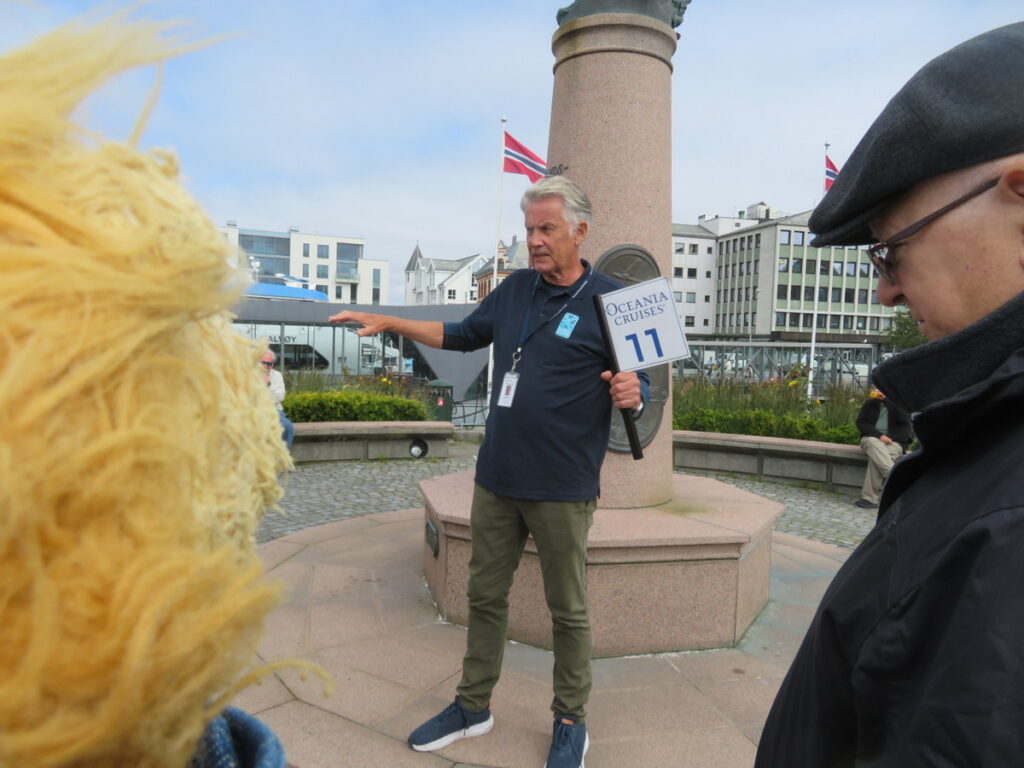

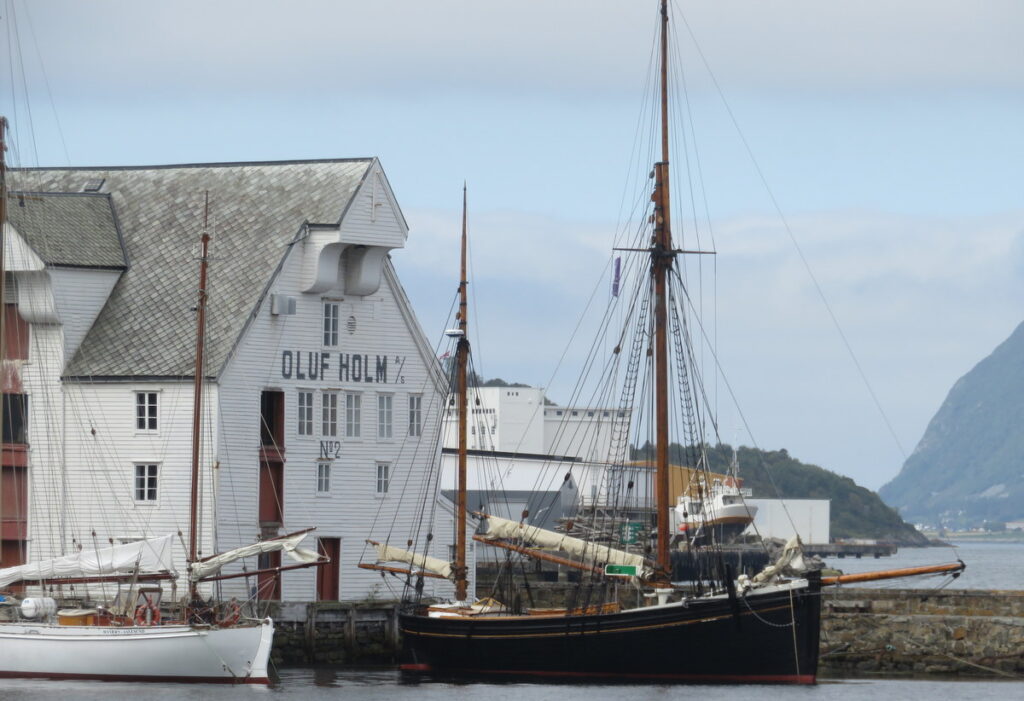
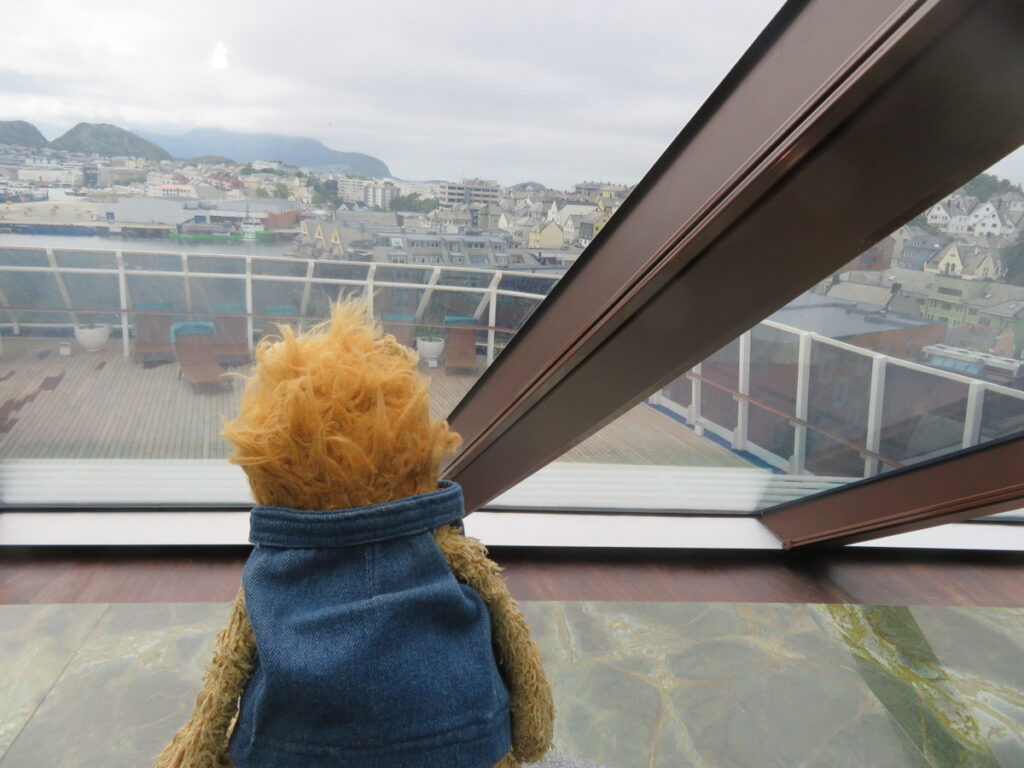
The next day, we were at sea all day, headed for Iceland. My cabin crew friends helped me watch the ship’s social channel on the television. Of course we went to tea! I had time to help Grandma with the Mensa quiz, too!
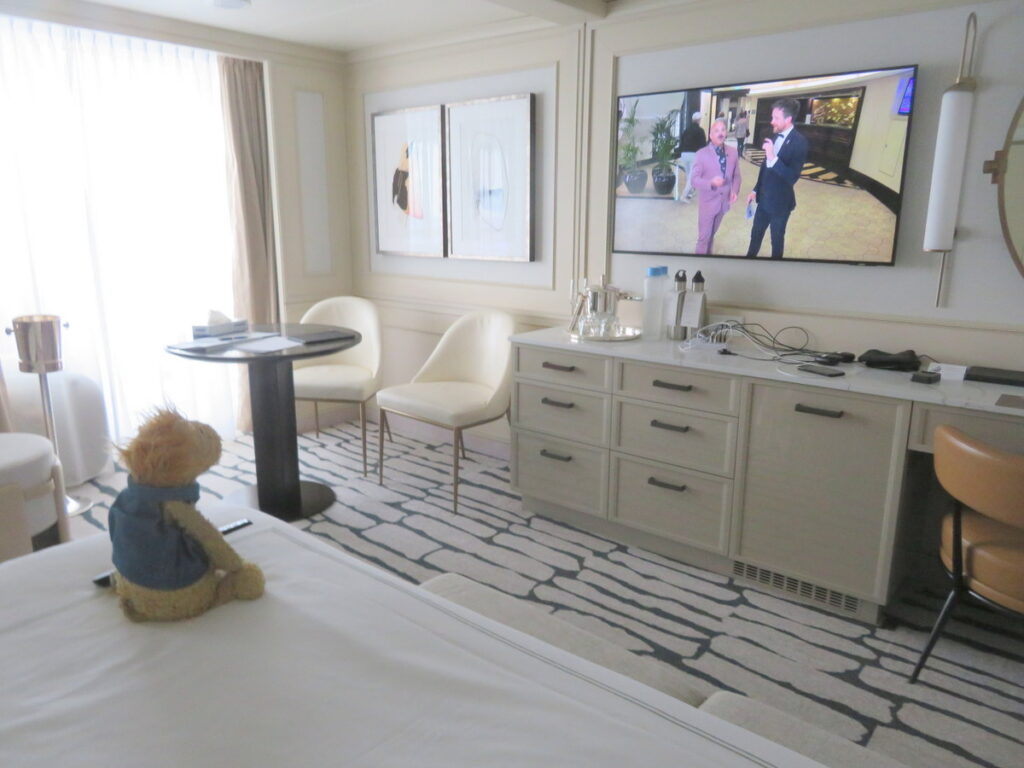
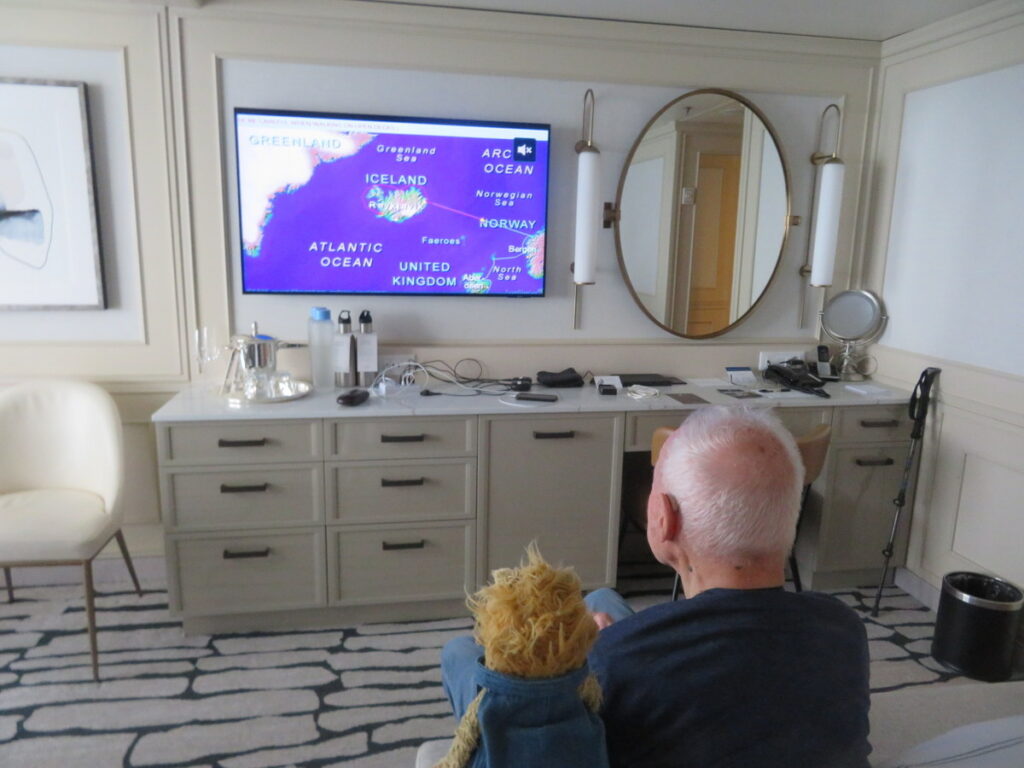
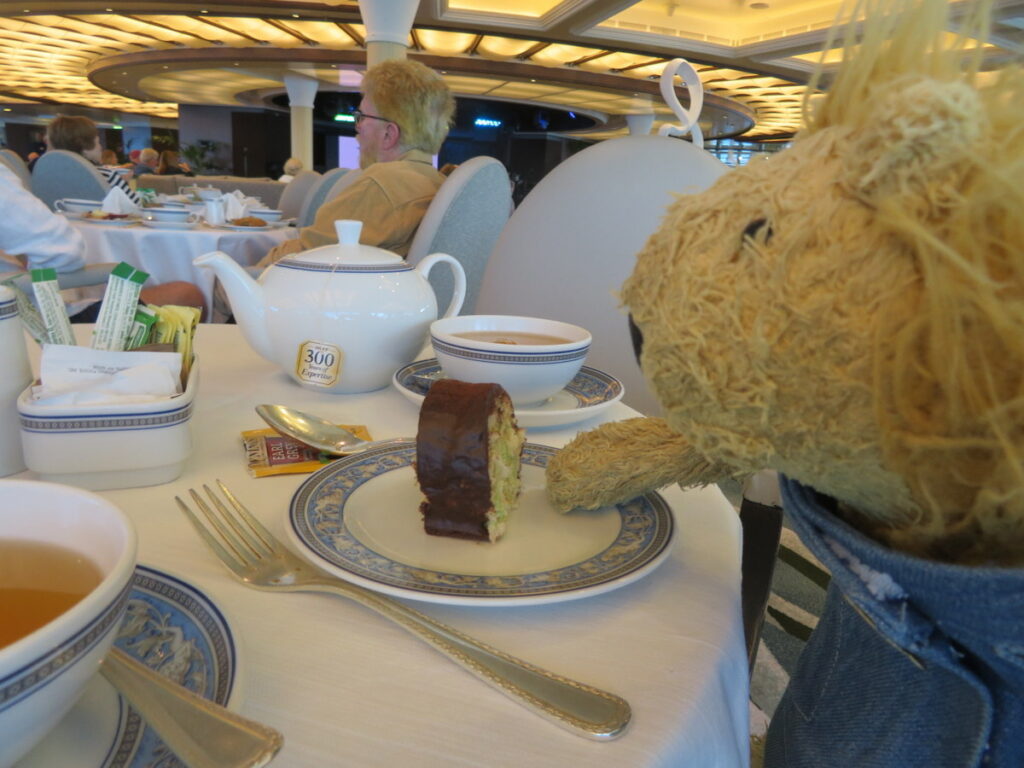
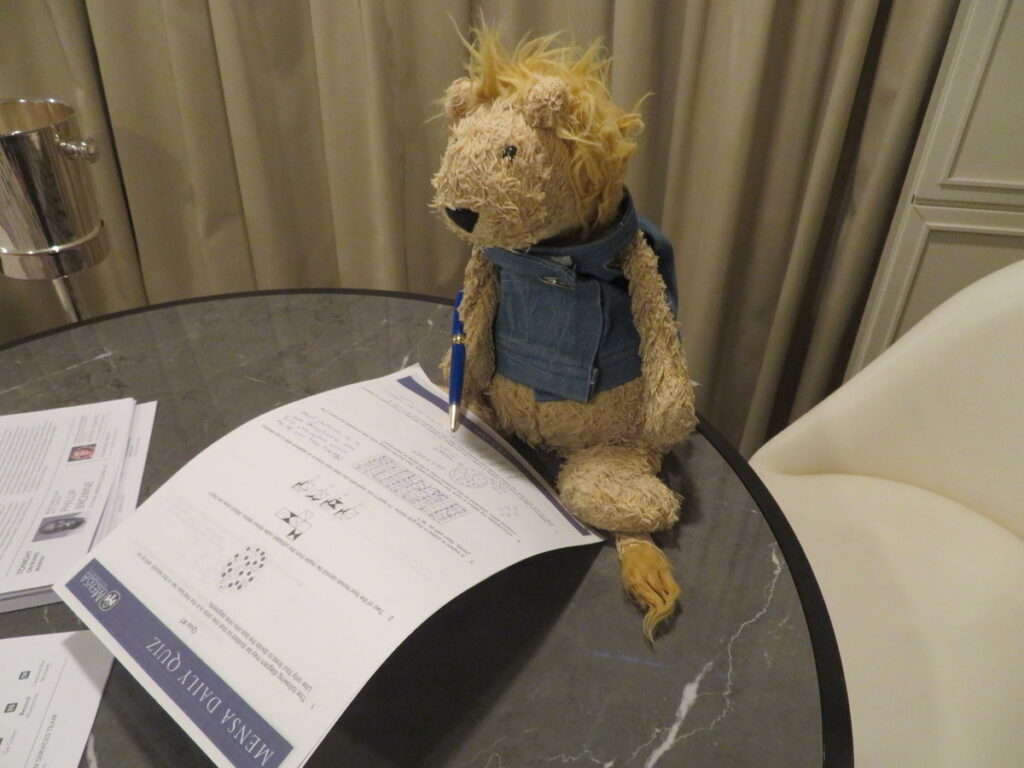
On Tuesday, we were docked in Seydisfjordur, on the east coast of Iceland. We went for a hike on the other side of the fjord! The hike followed the course of the series of waterfalls, and we started at the bottom. First there was a scramble up some rocks to get to the first ledge. Then there was a path that gradually went uphill. Every time we got a little higher, we could see more waterfalls ahead!
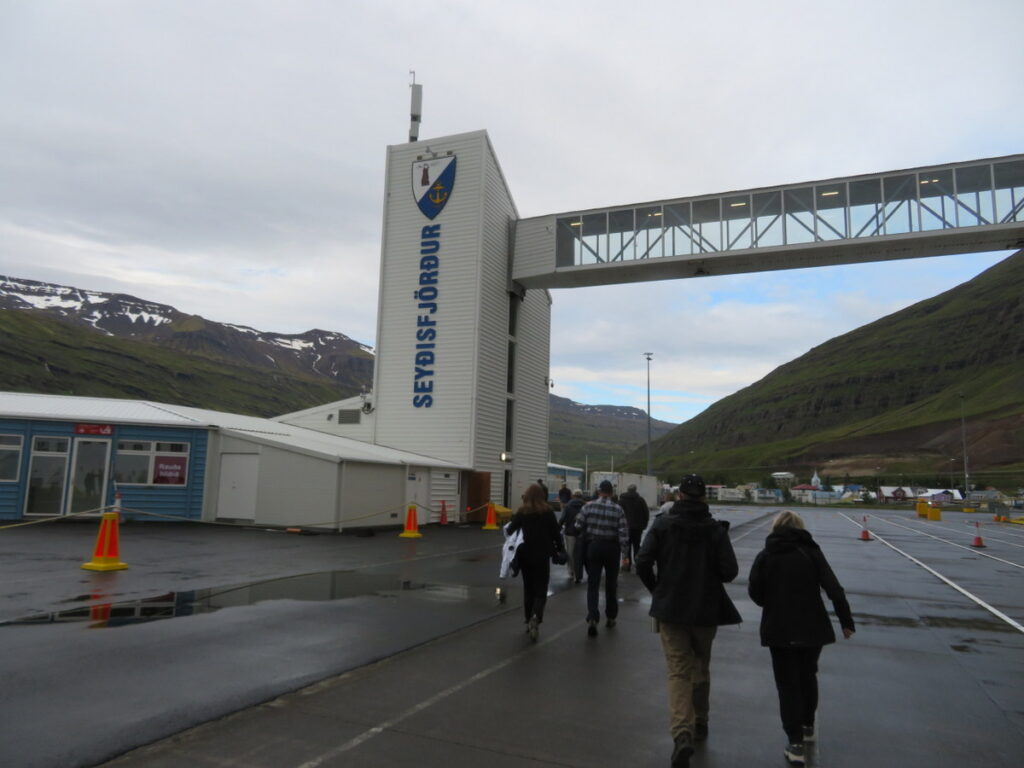
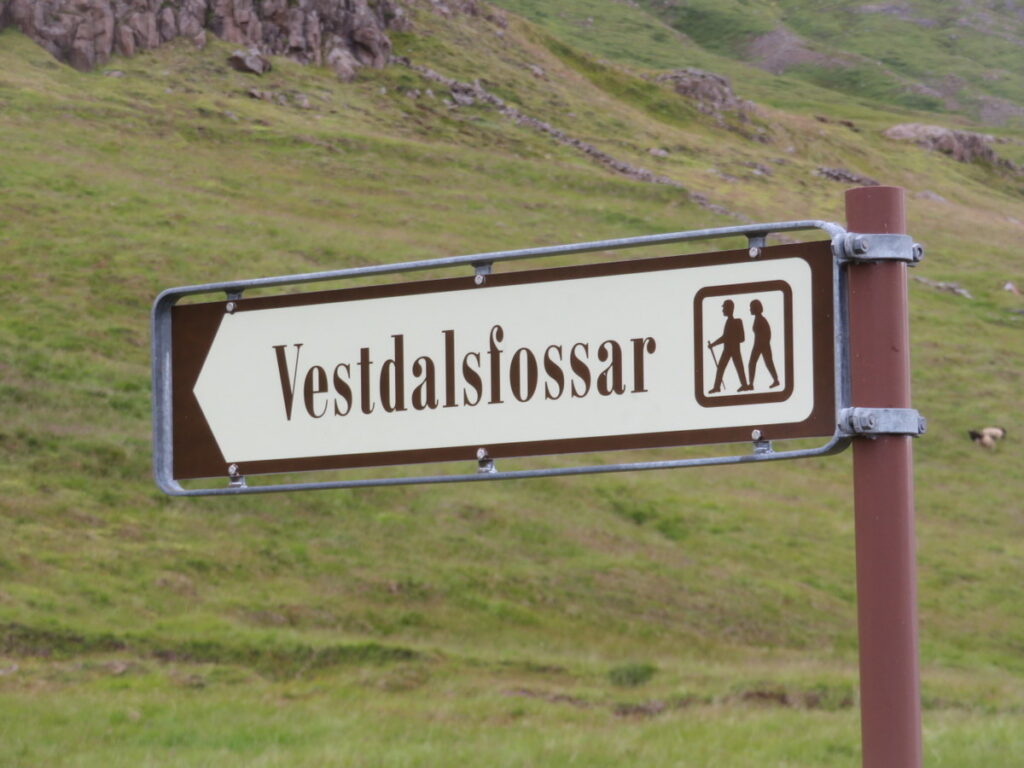
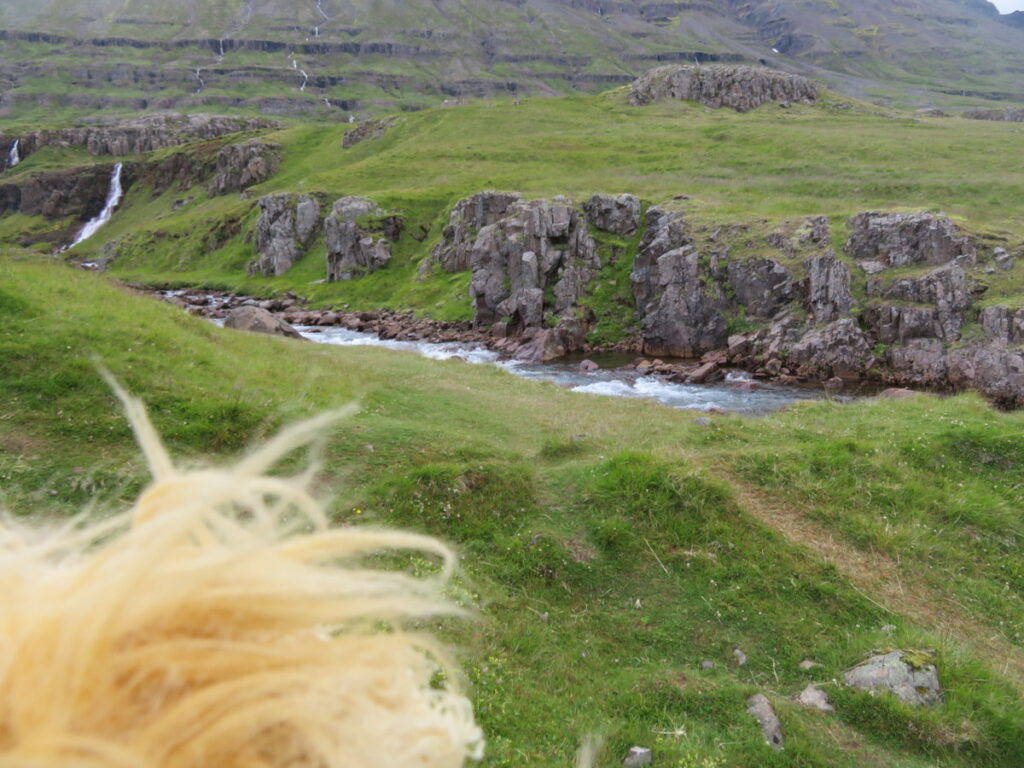
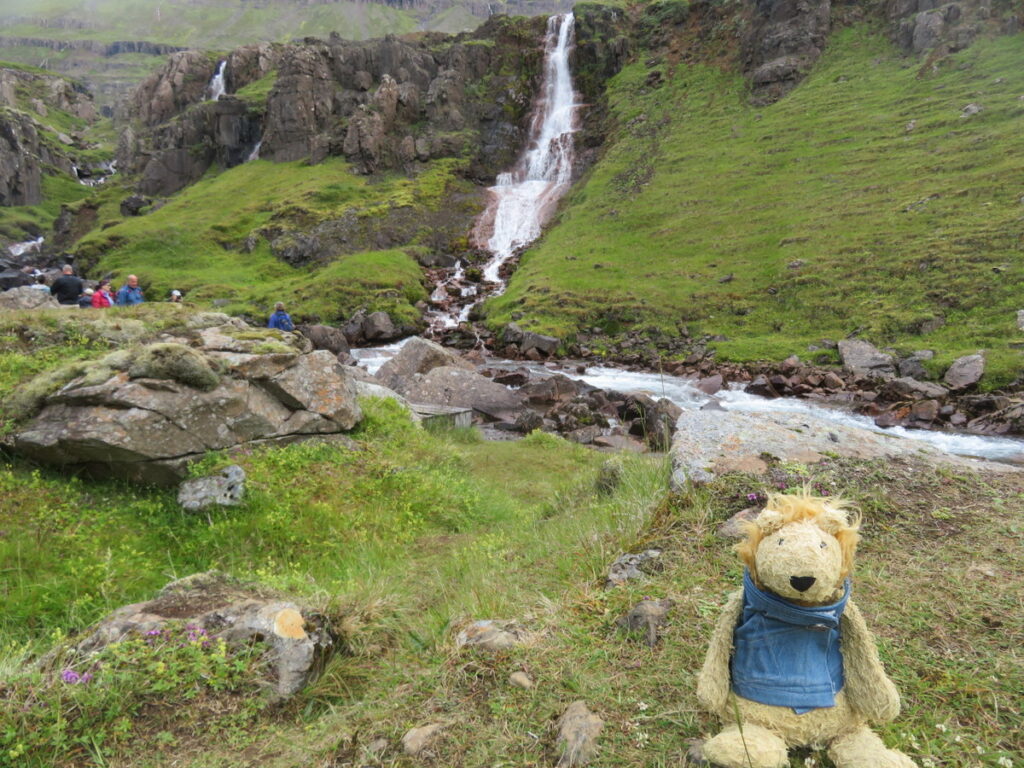
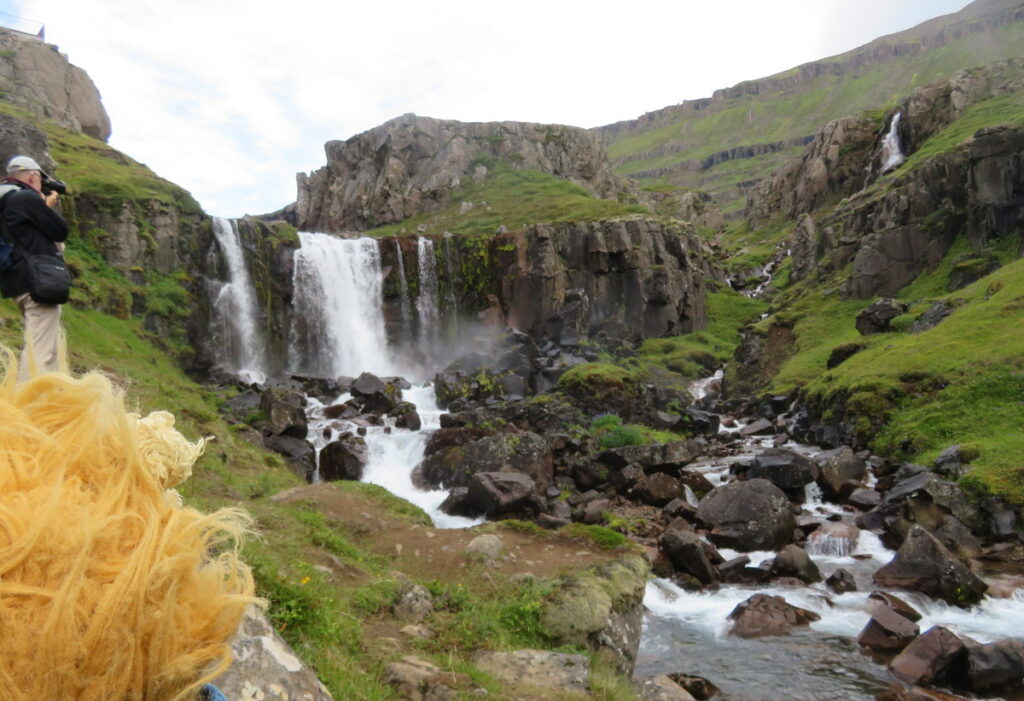
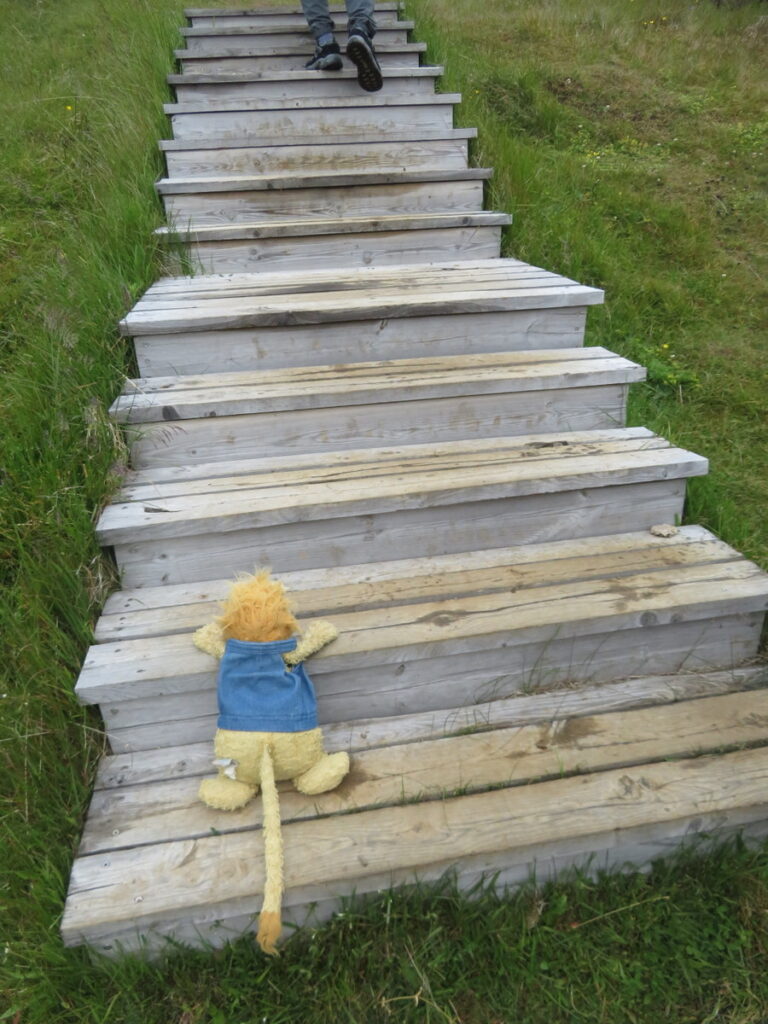

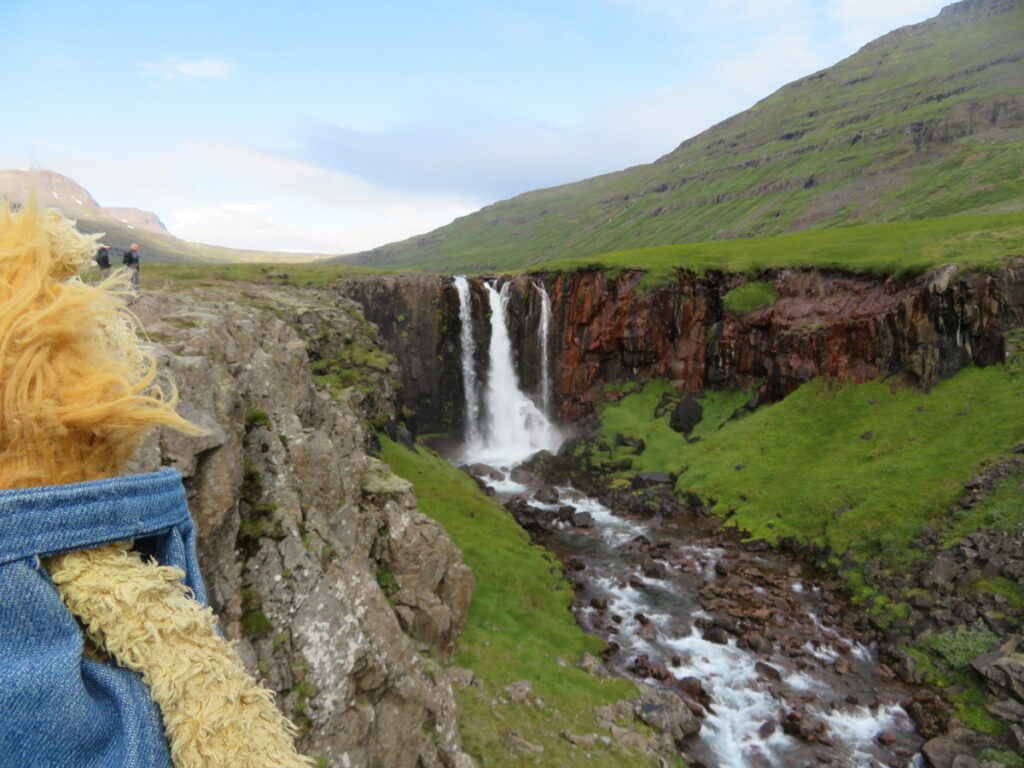
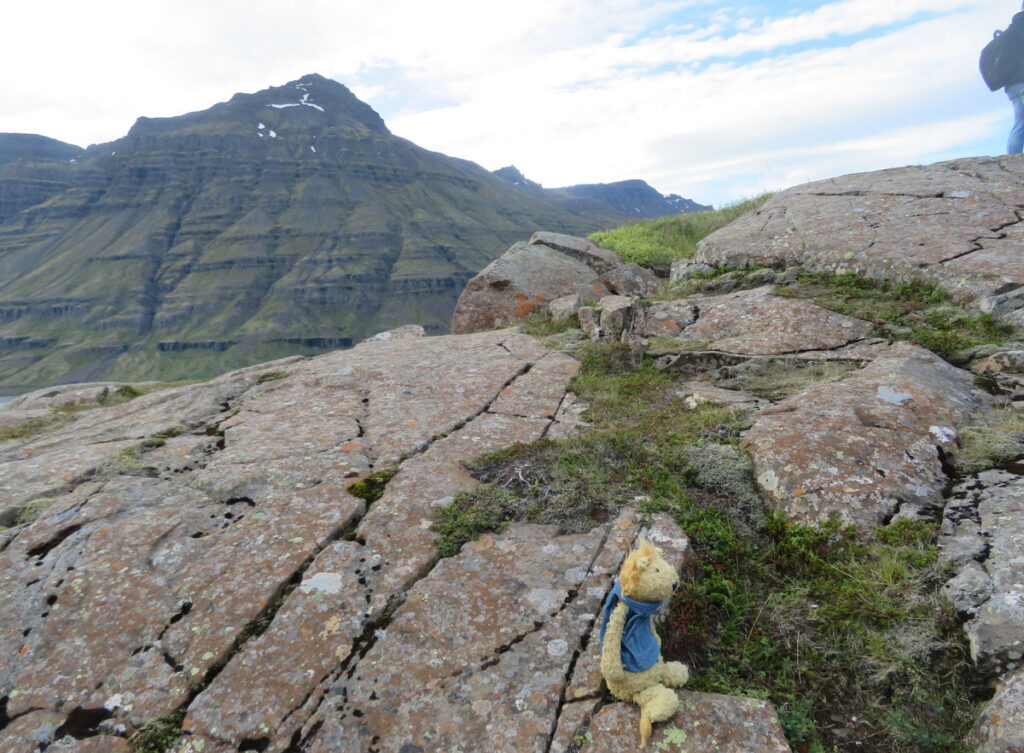
We took a rest at a meadow with a pond. Our guide said that’s where the local children learned to swim! Then there were more waterfalls ahead! This was a very long hike for a little lion! When we got back, Grandpa and I were very tired. We ordered lunch from room service!
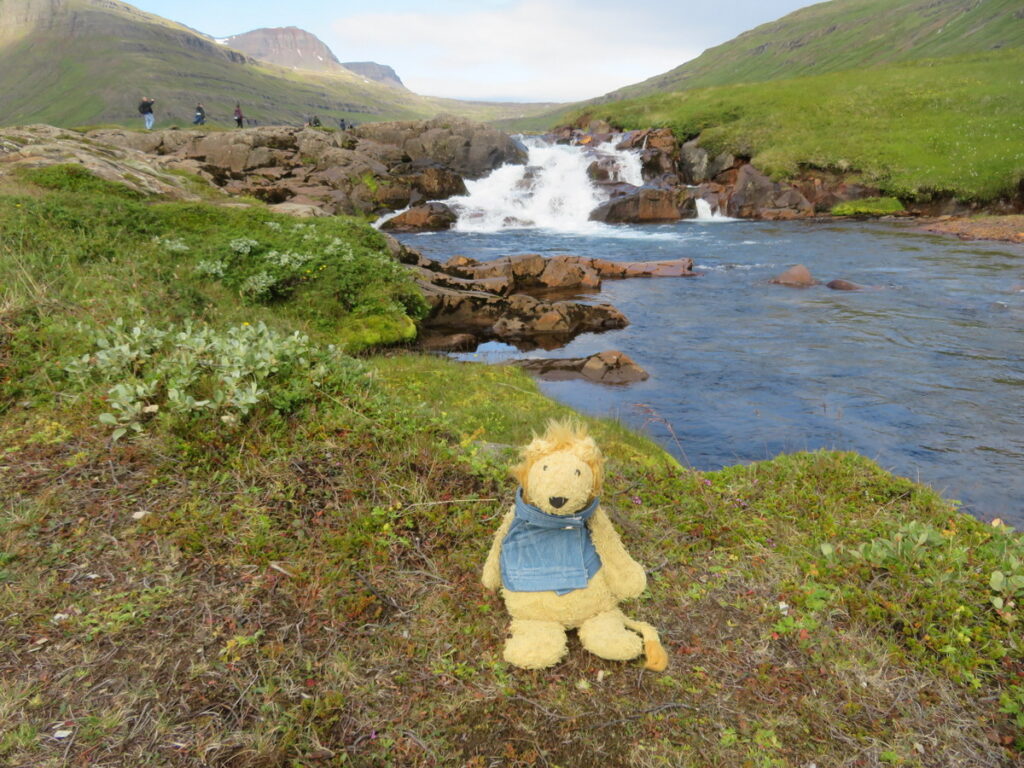
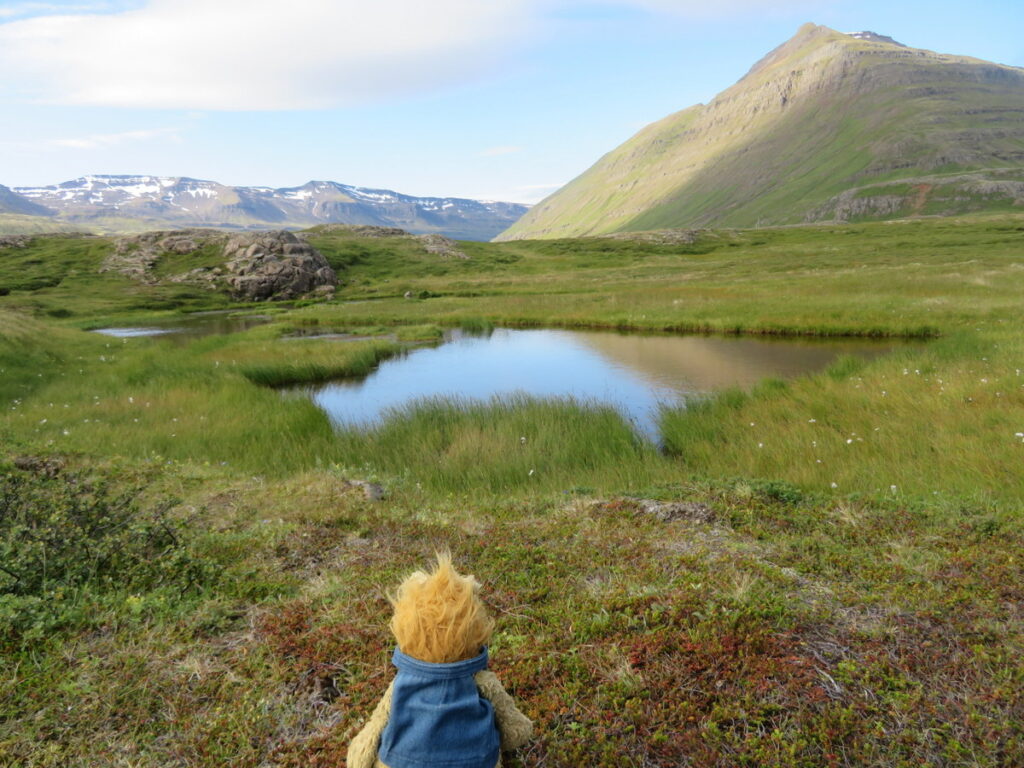
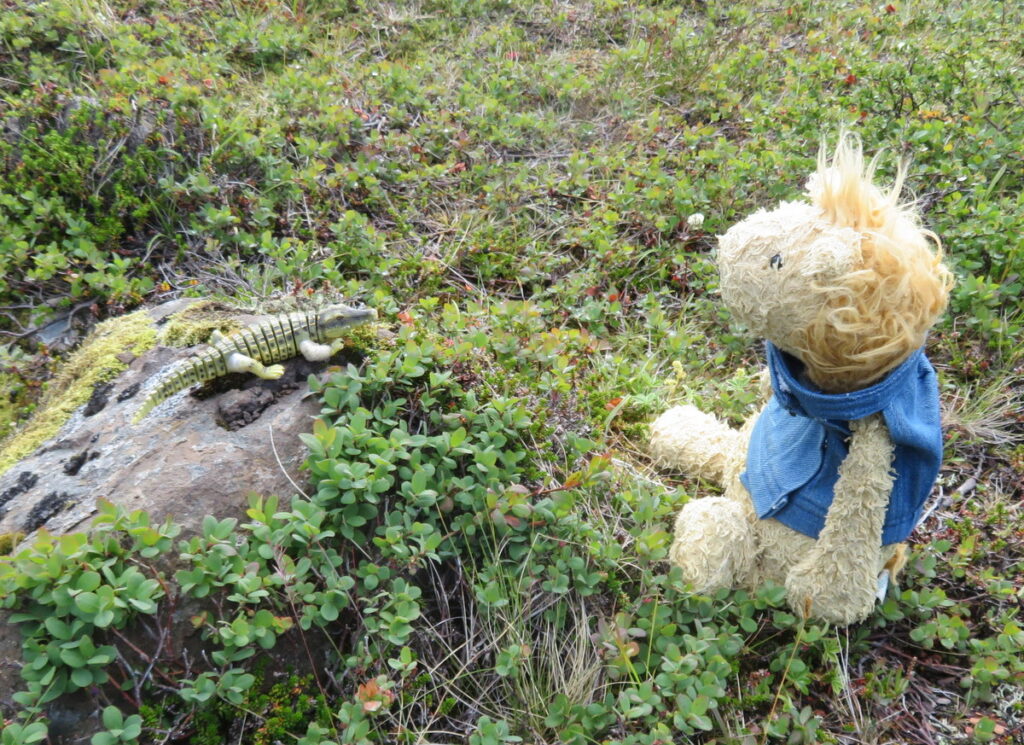
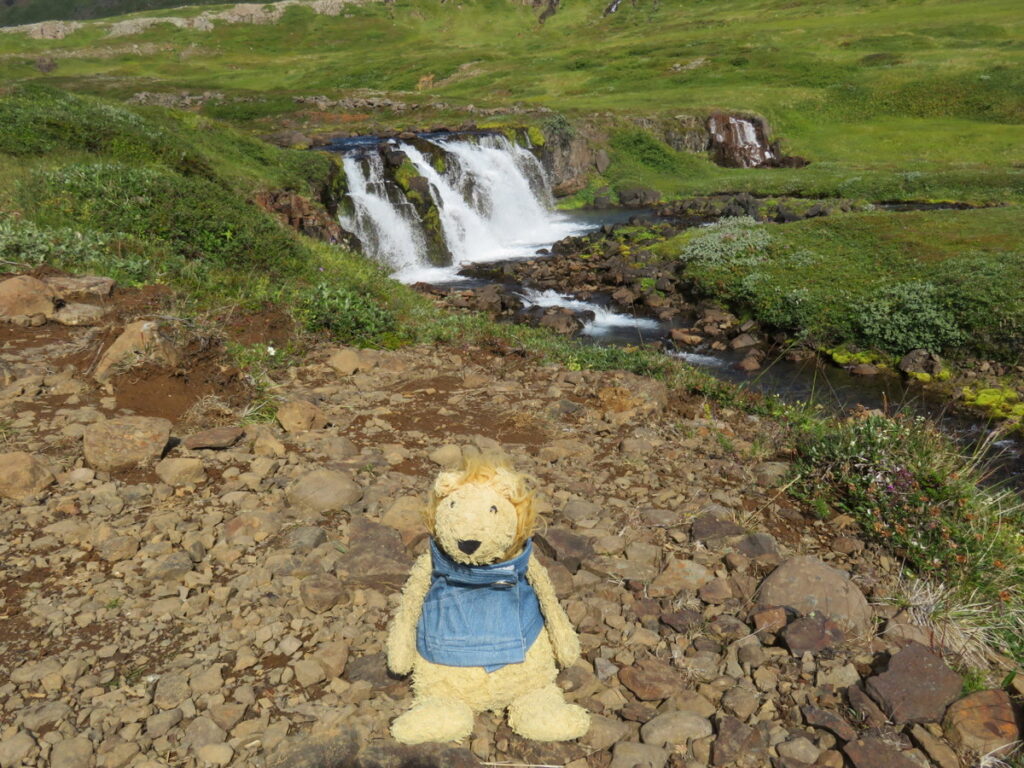
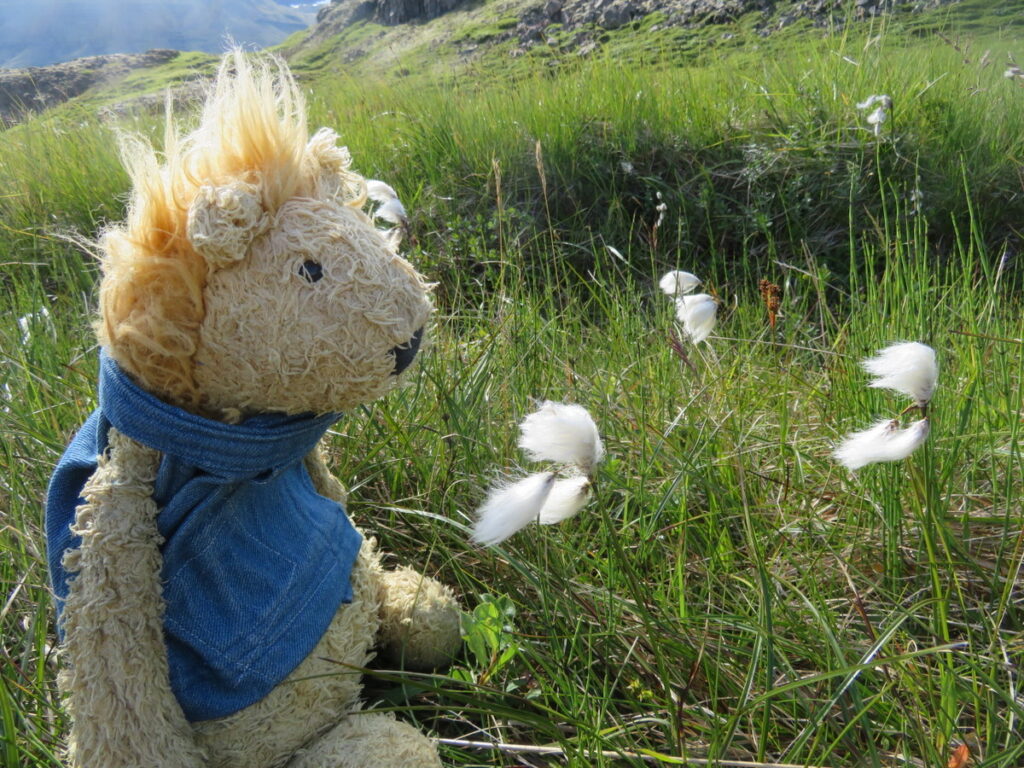
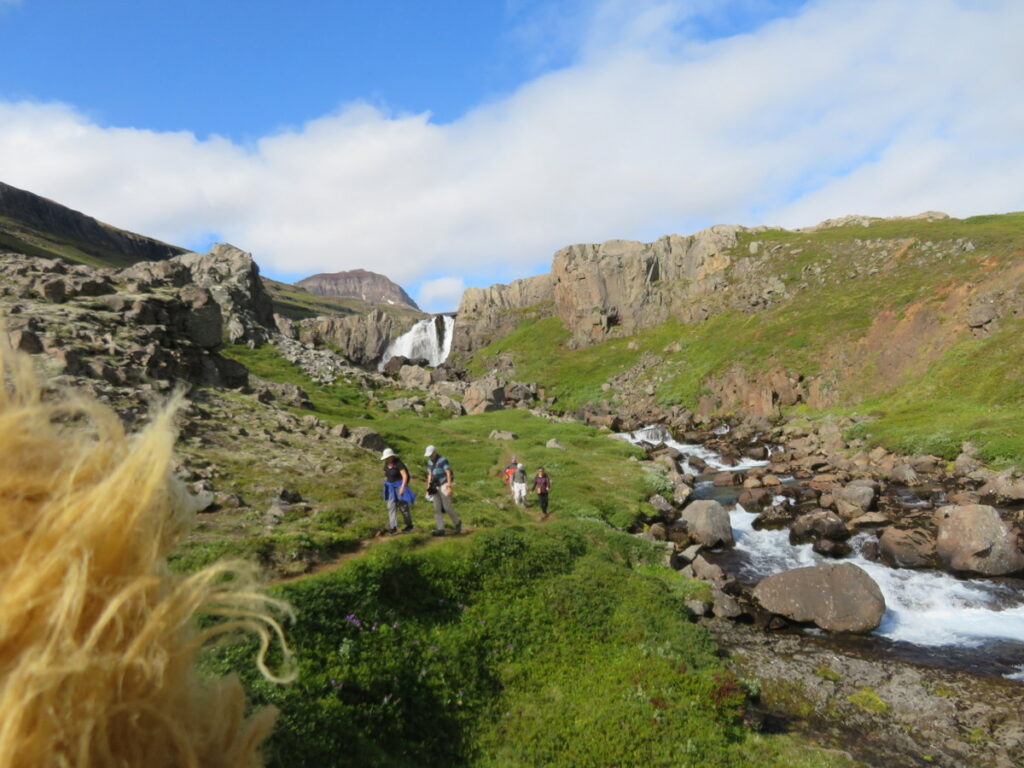
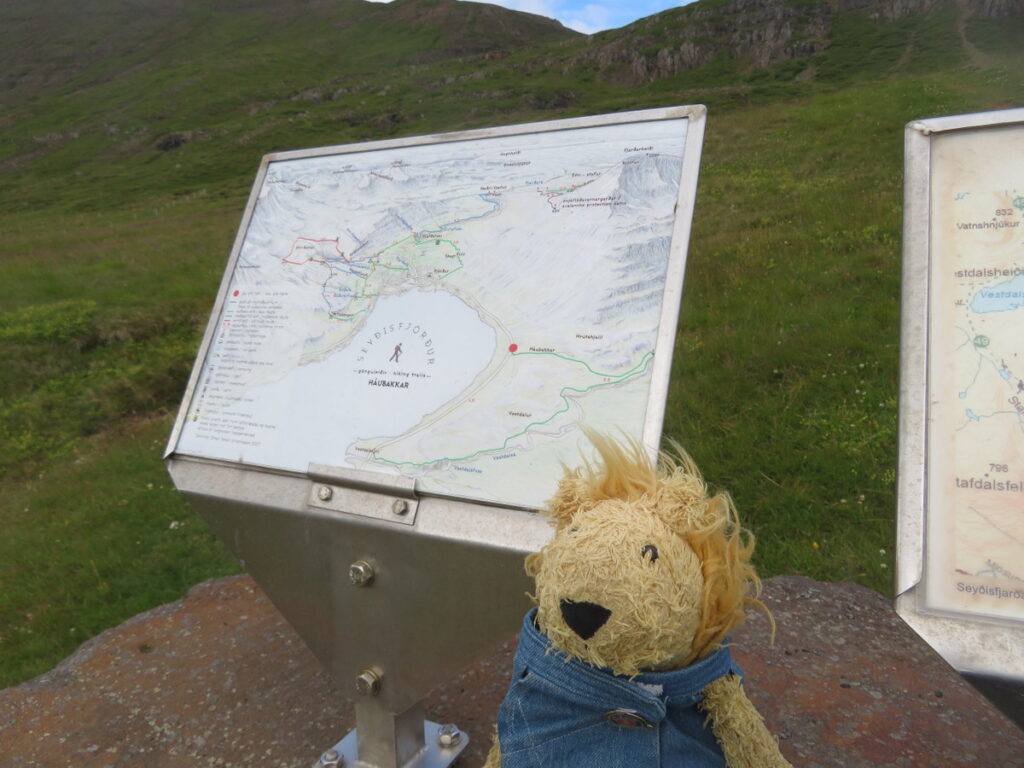
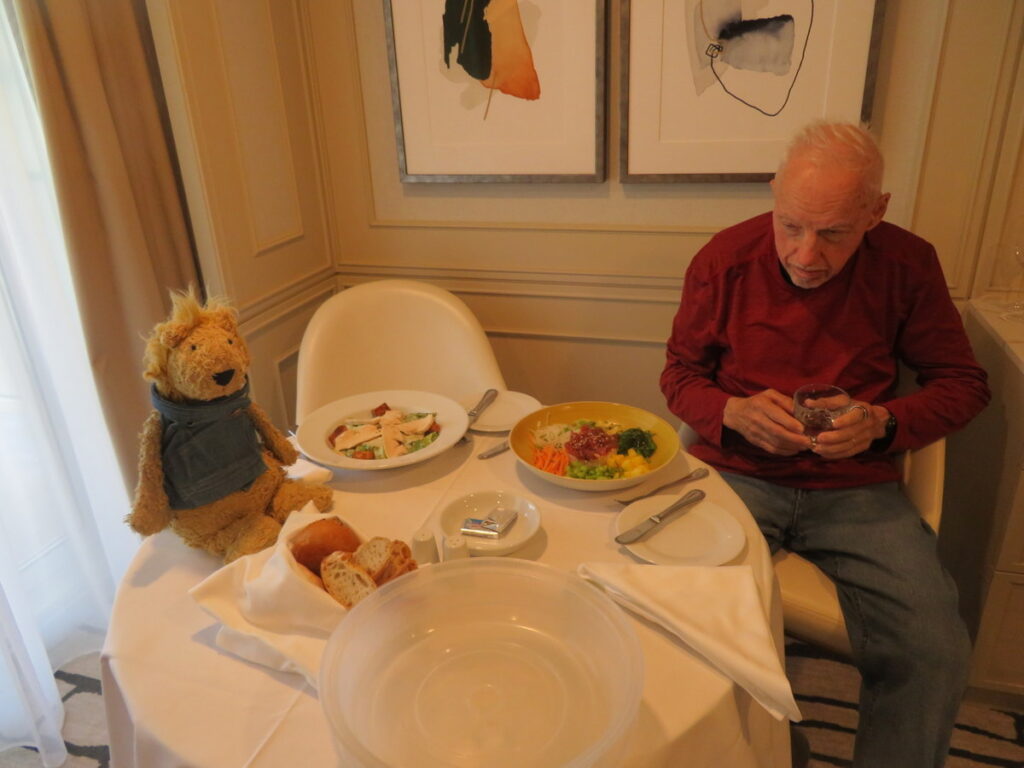
By tea time, we were a little bit better rested. MS Marina left port during tea, so I could watch us head out of the fjord from there. When I got back to our cabin, I could look back and see our hiking path. Then it was back out to the coast. The cabin crew set me up to enjoy the evening view!
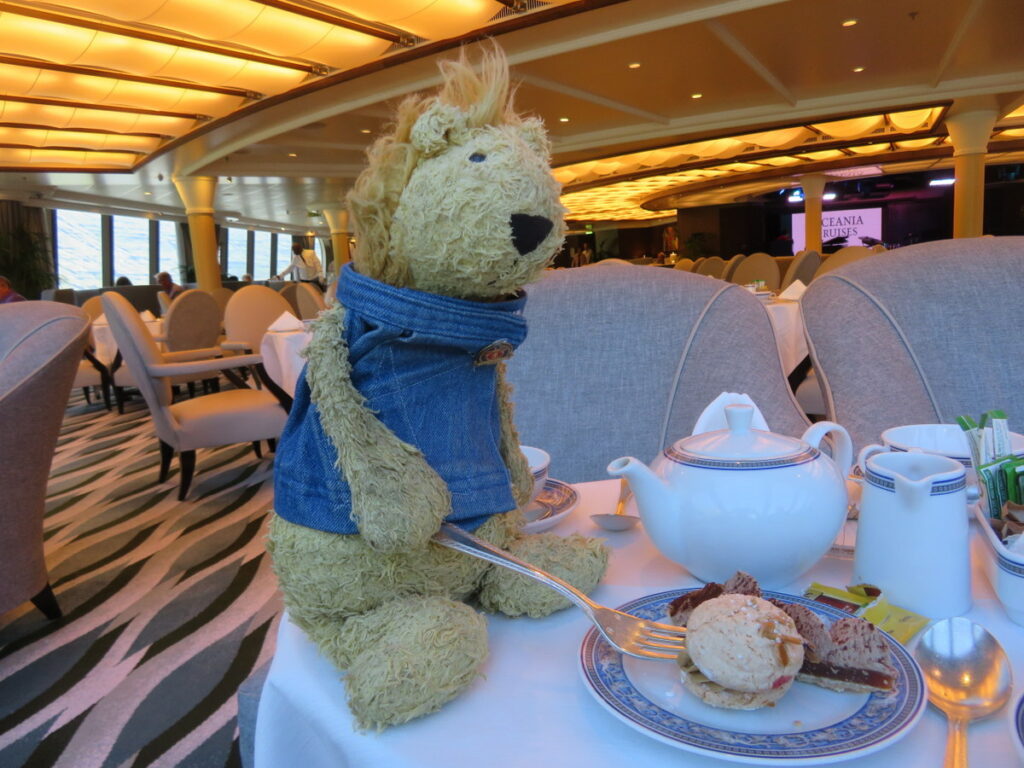
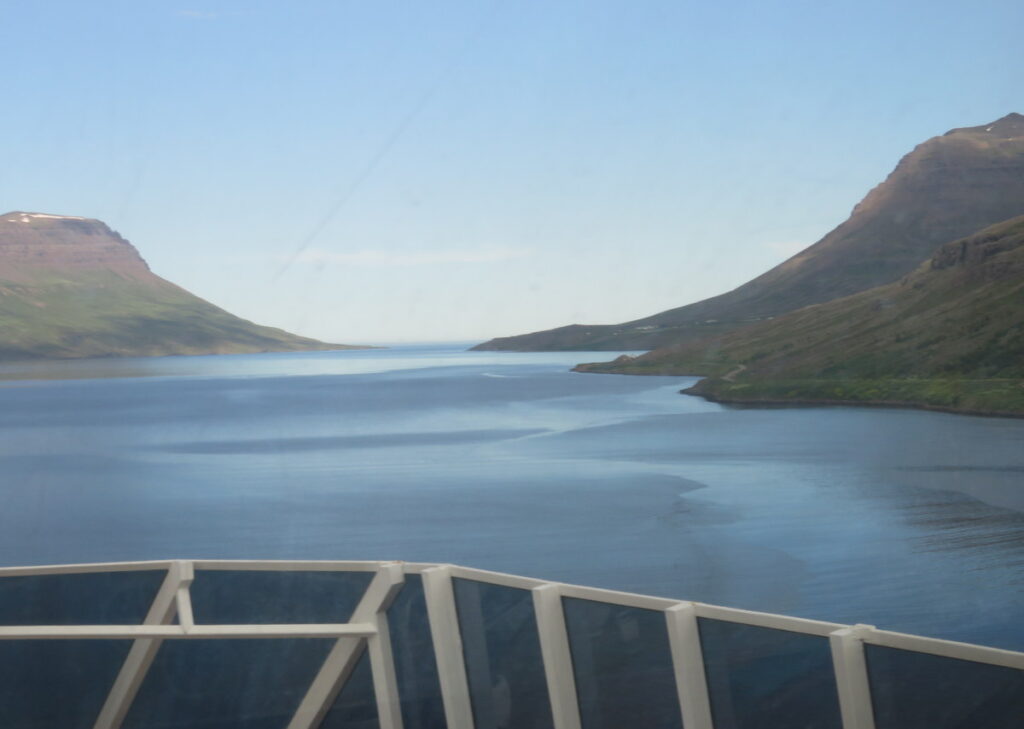
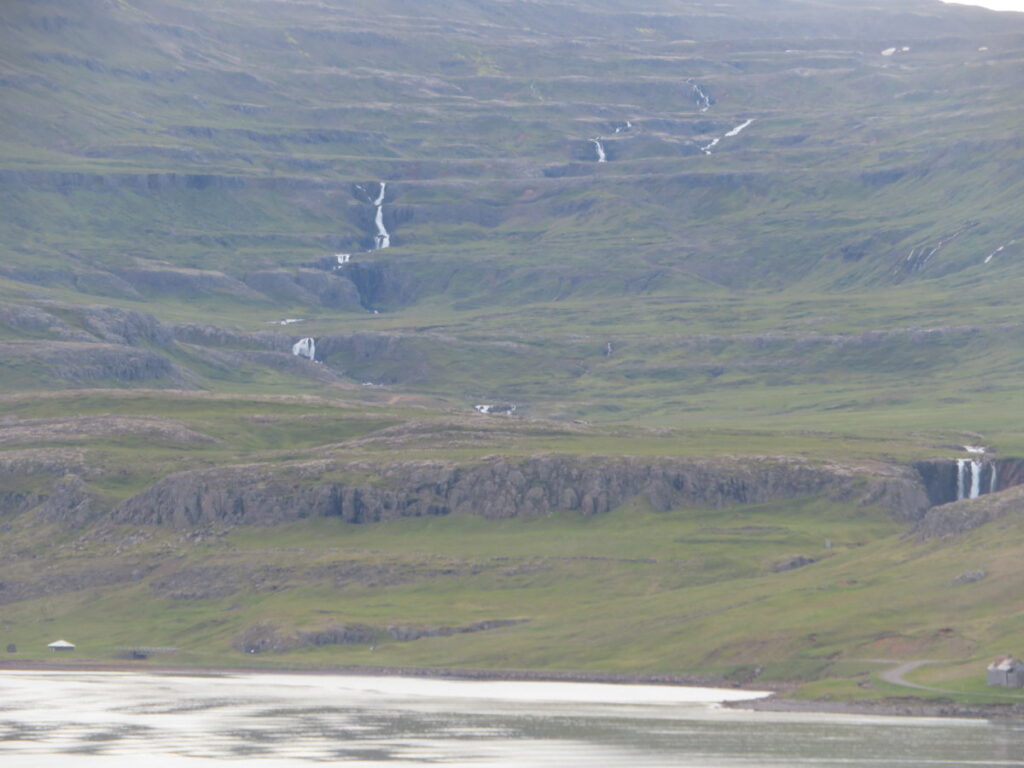
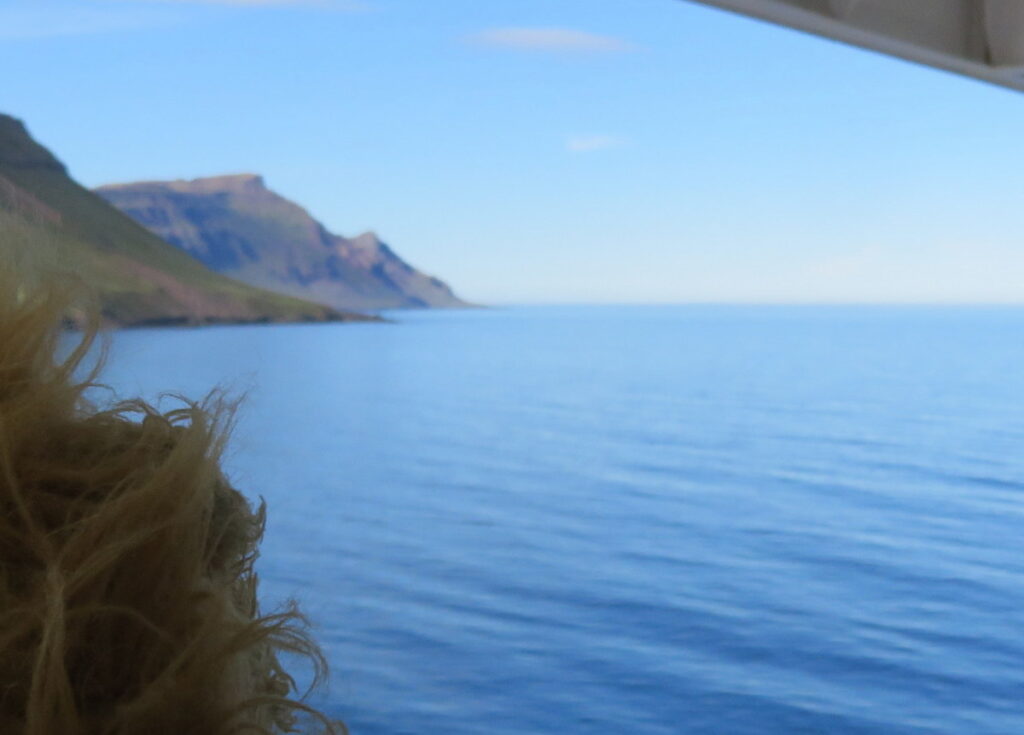
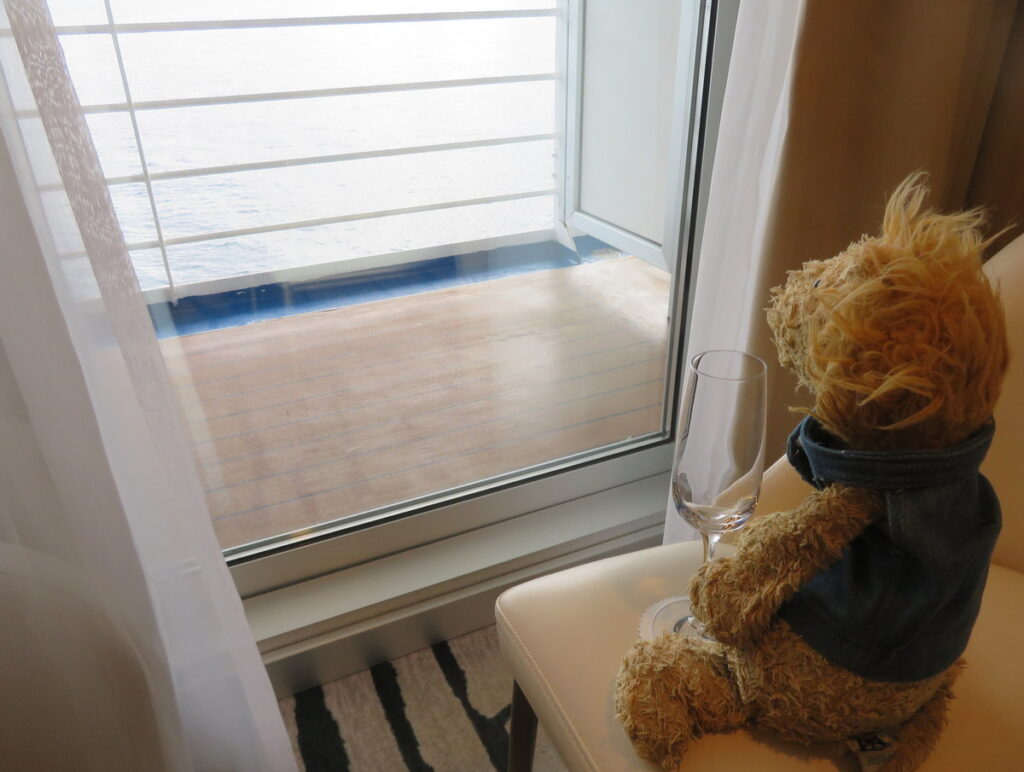
Yesterday we were docked at Akureyri, the largest town in the north of Iceland. Grandma and I took a bus tour ! First, we went to Godafoss waterfall. This is the biggest waterfall in the north and there were lots of visitors! The name comes from a story that when an early ruler decided to convert to Christianity, he threw all his pagan religious symbols into the waterfall. We walked all the way up to the top of the falls, then back down. There were lots of viewing spots!
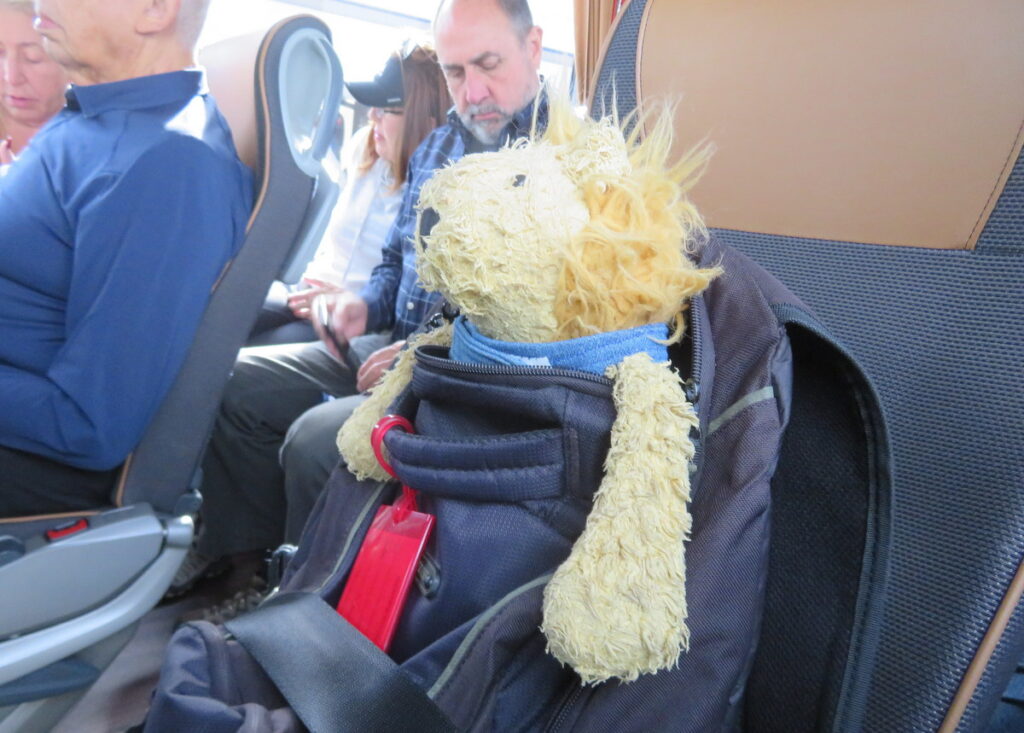
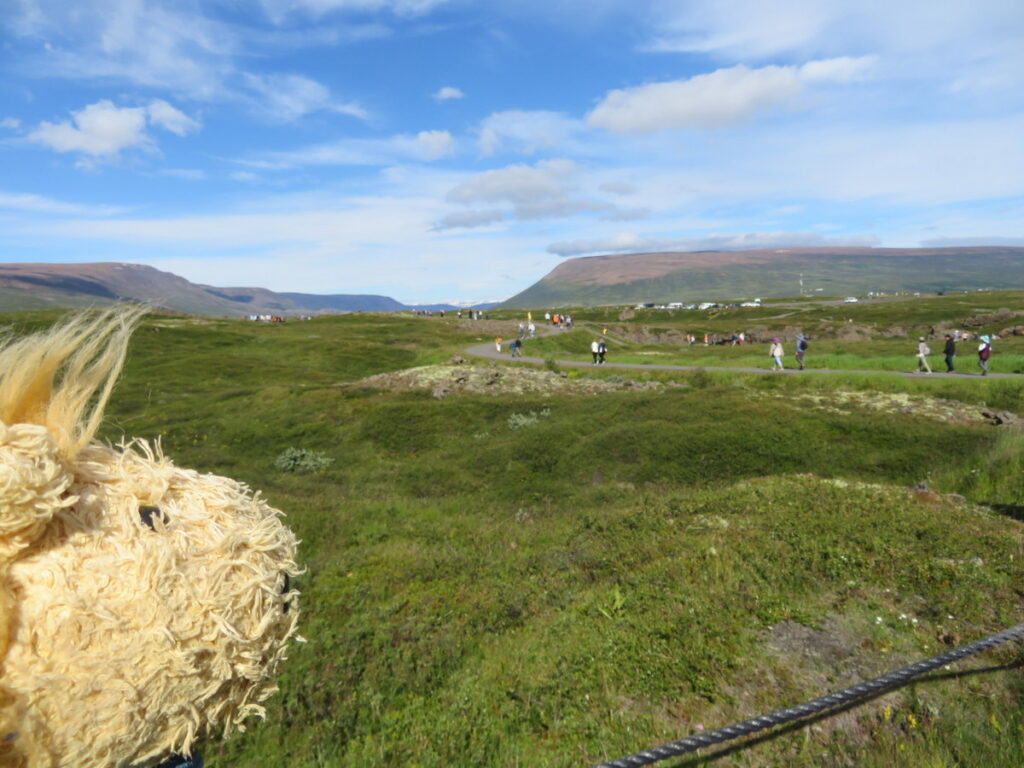
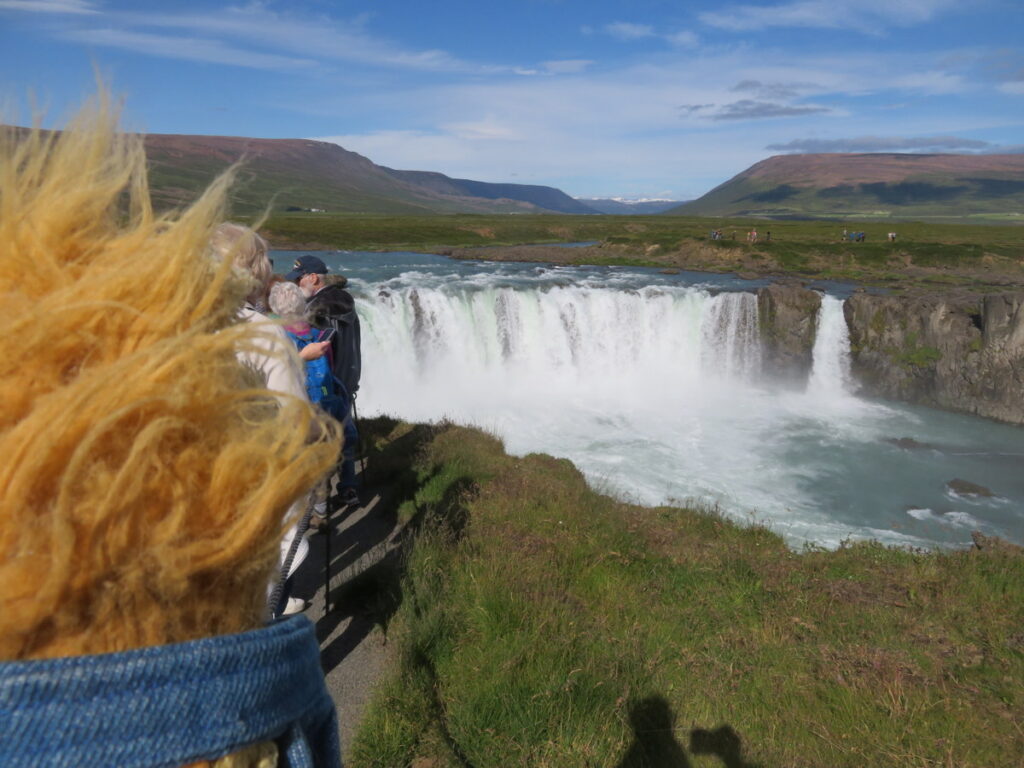
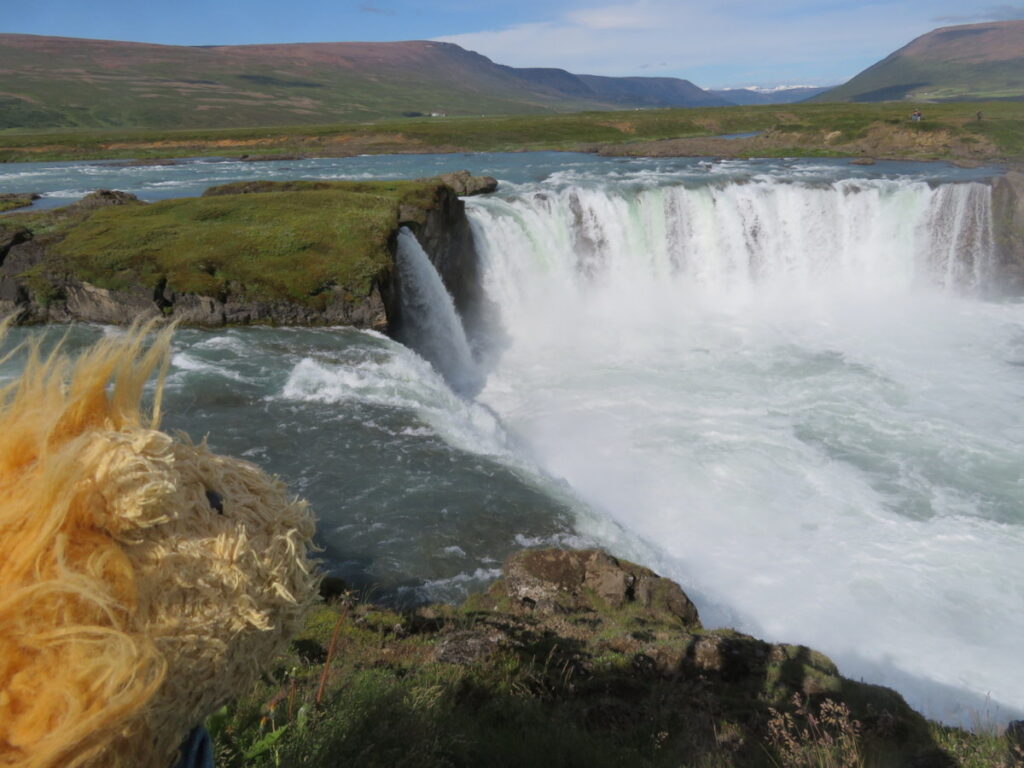
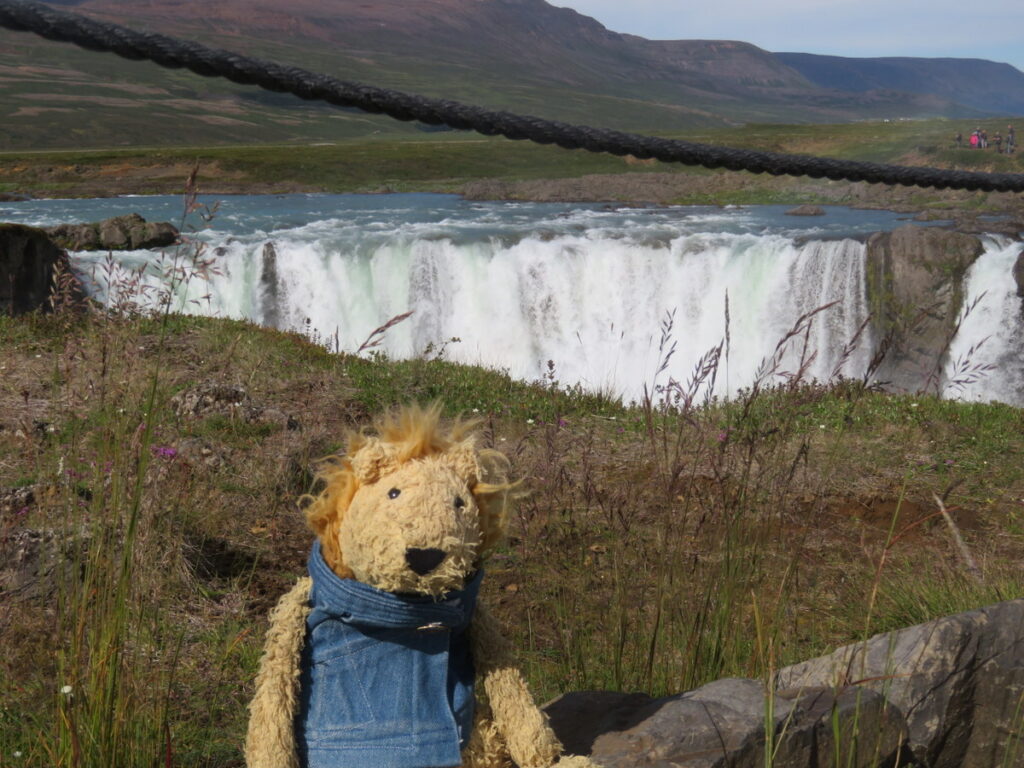
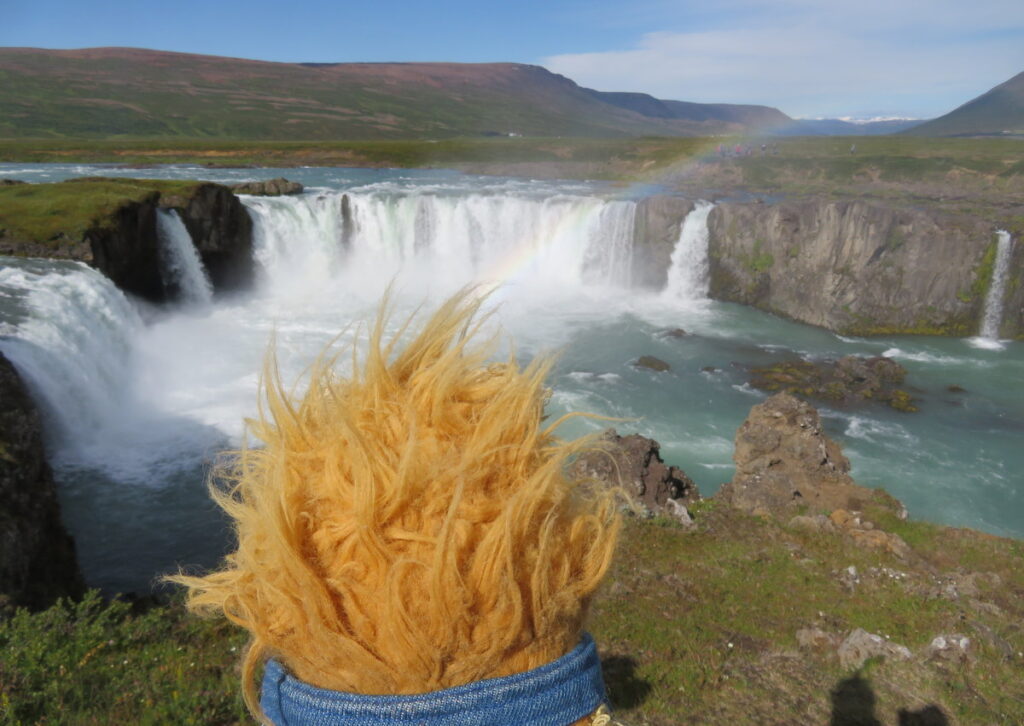
There were steps down to the river level just below the falls, so Grandma took me down there, too! Then we walked back along the river to our tour bus.
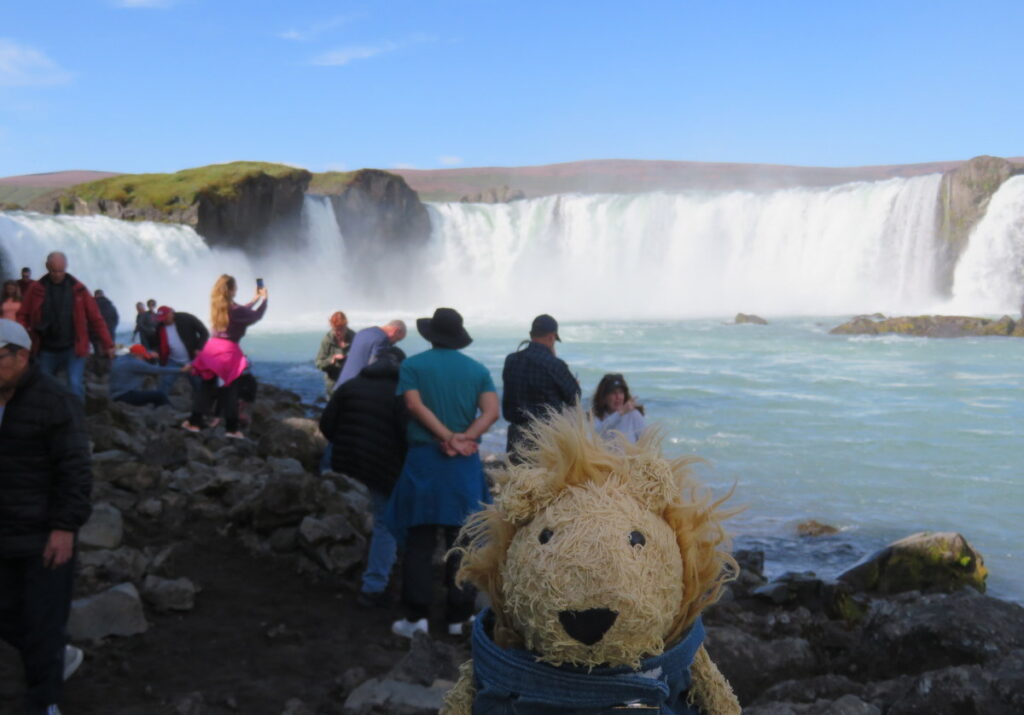
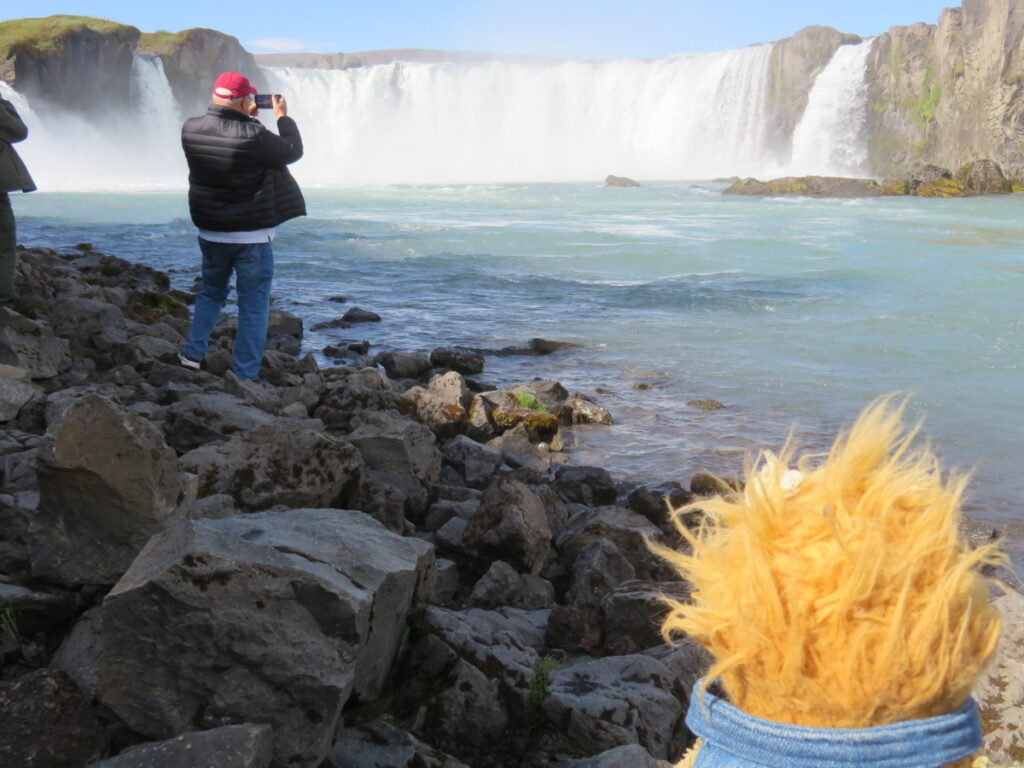
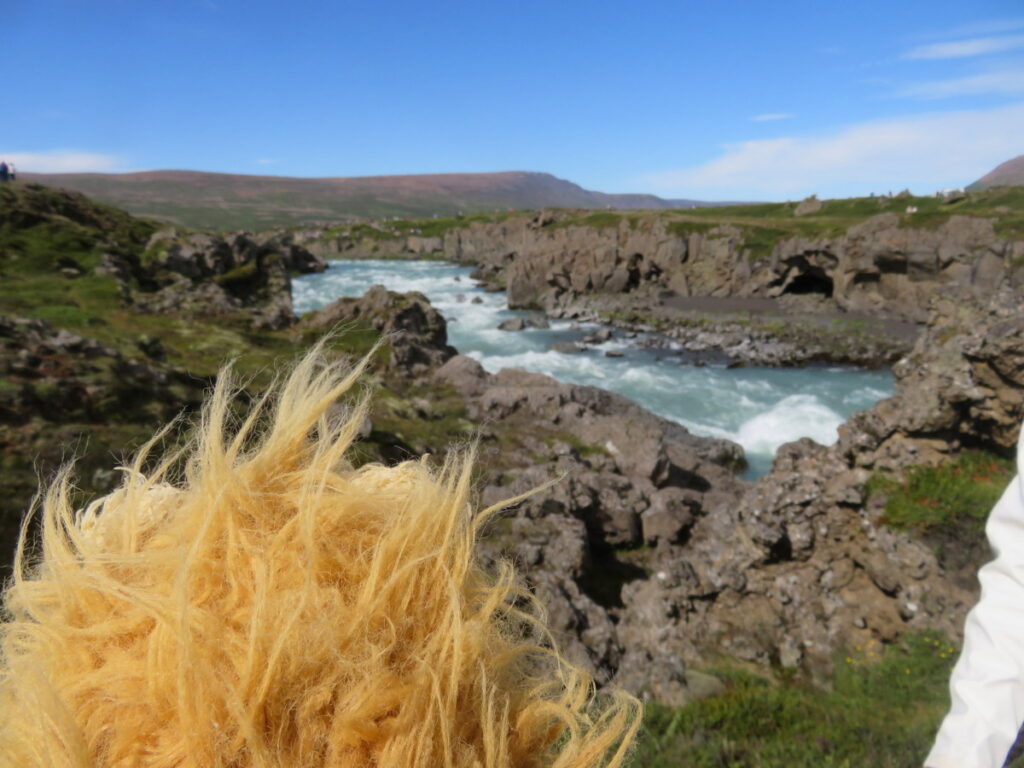
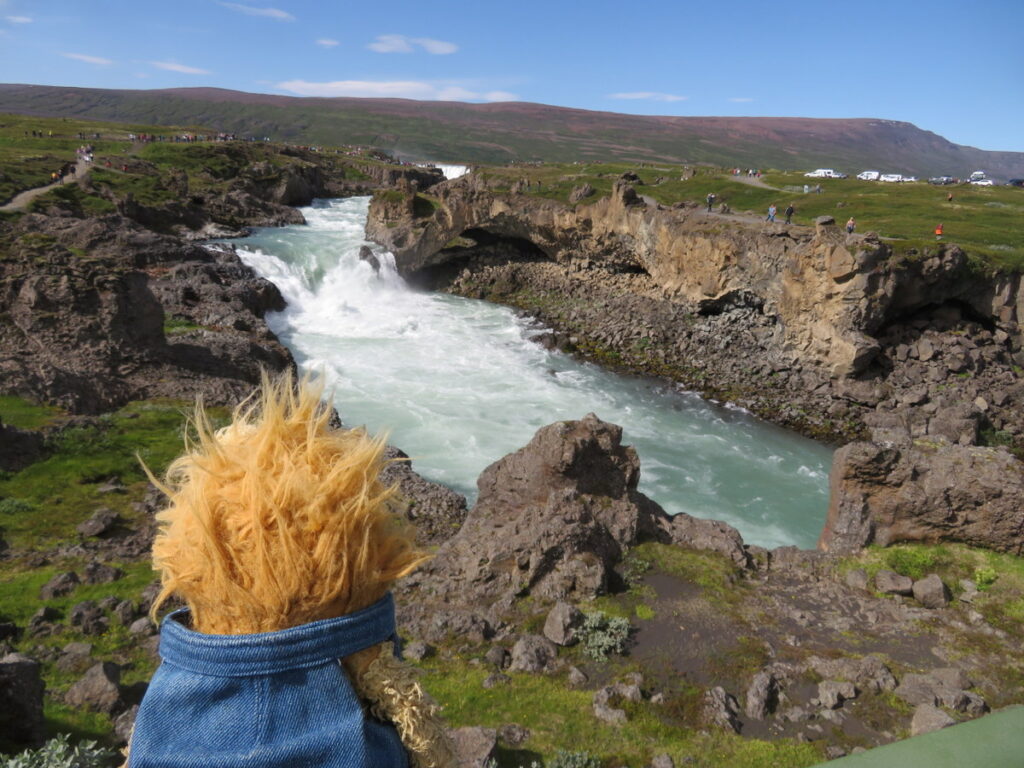
Next, we went to a geothermal area. Iceland is on the rift between the American and European continental plates, and they are moving apart. That means a lot of energy from the earth’s core can leak here as hot rock and steam. We passed Myrvatn lake on our way to Namaskard Sulfataras. Our guide told us Myrvatn means “black flies”. We could see clouds of them along the lakeshore! At Solfataras we visited bubbling mud. That reminded me of New Zealand! There were fumaroles, too! They were venting a steady stream of warm, sulfur smelling steam!
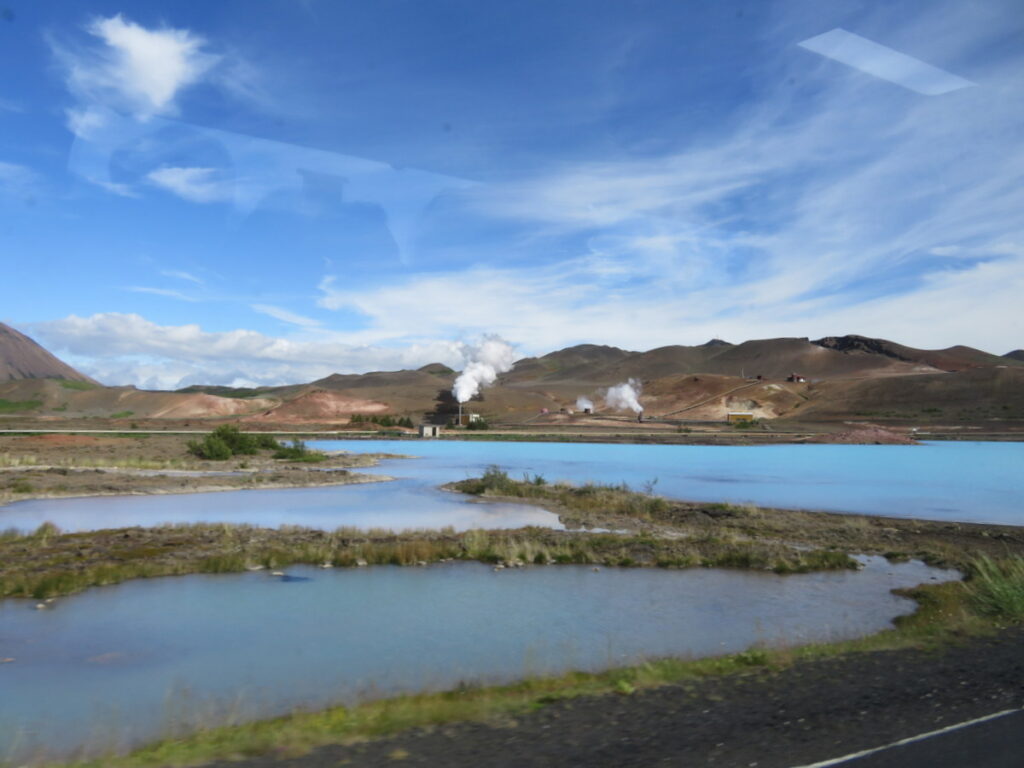
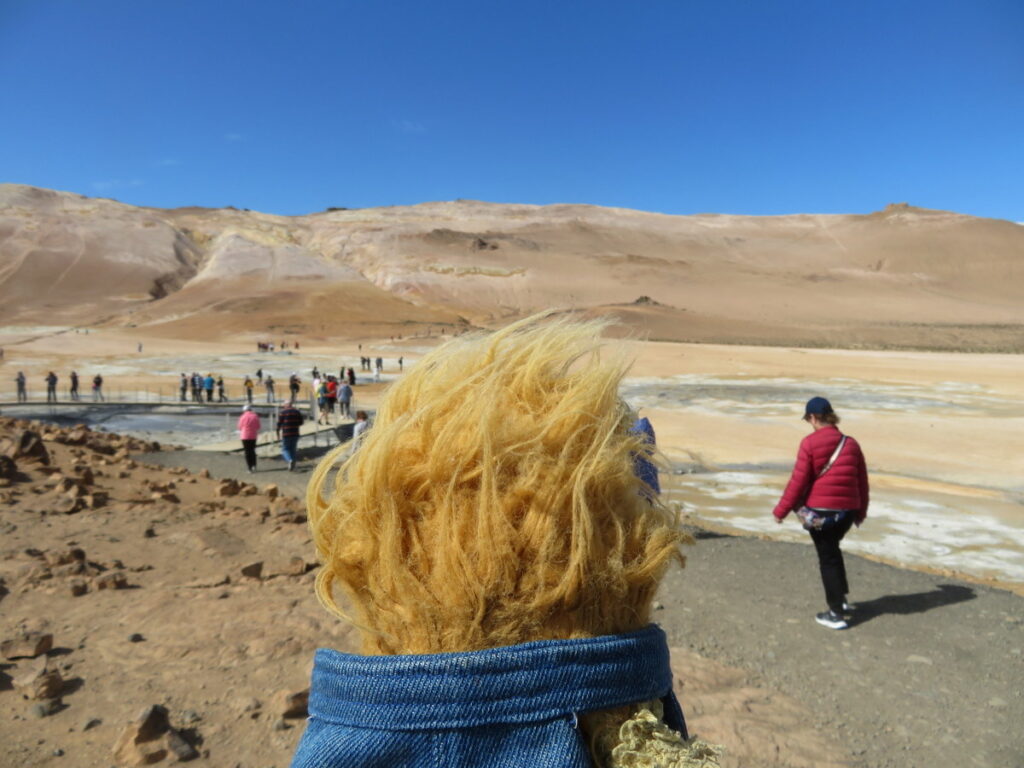
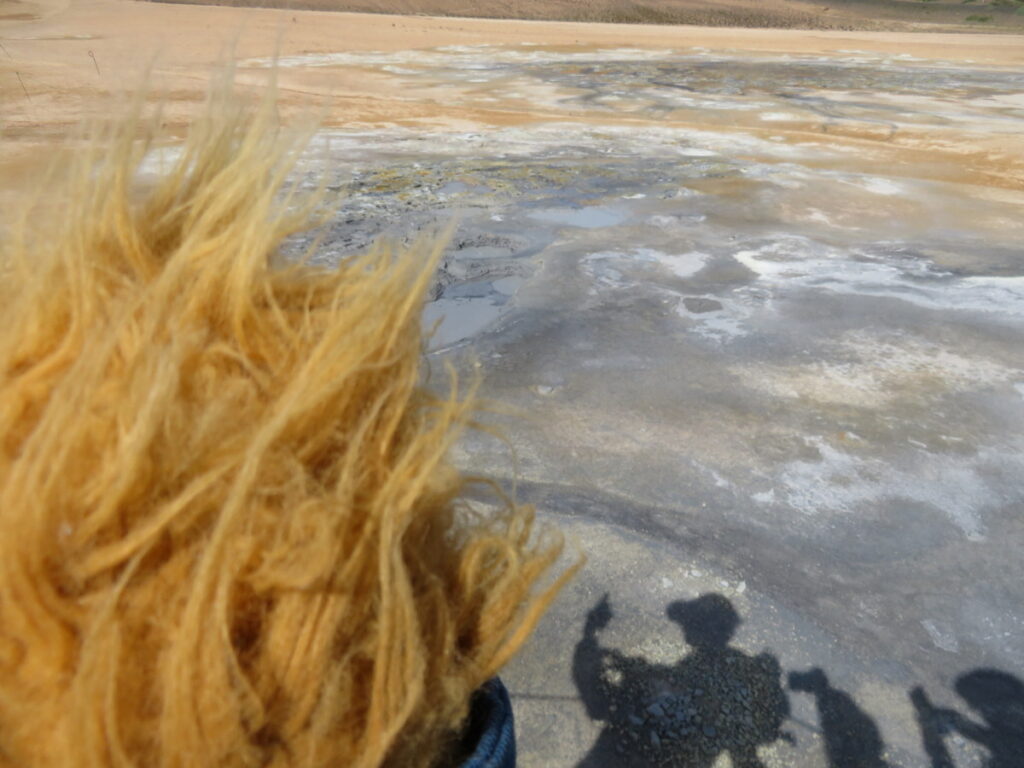
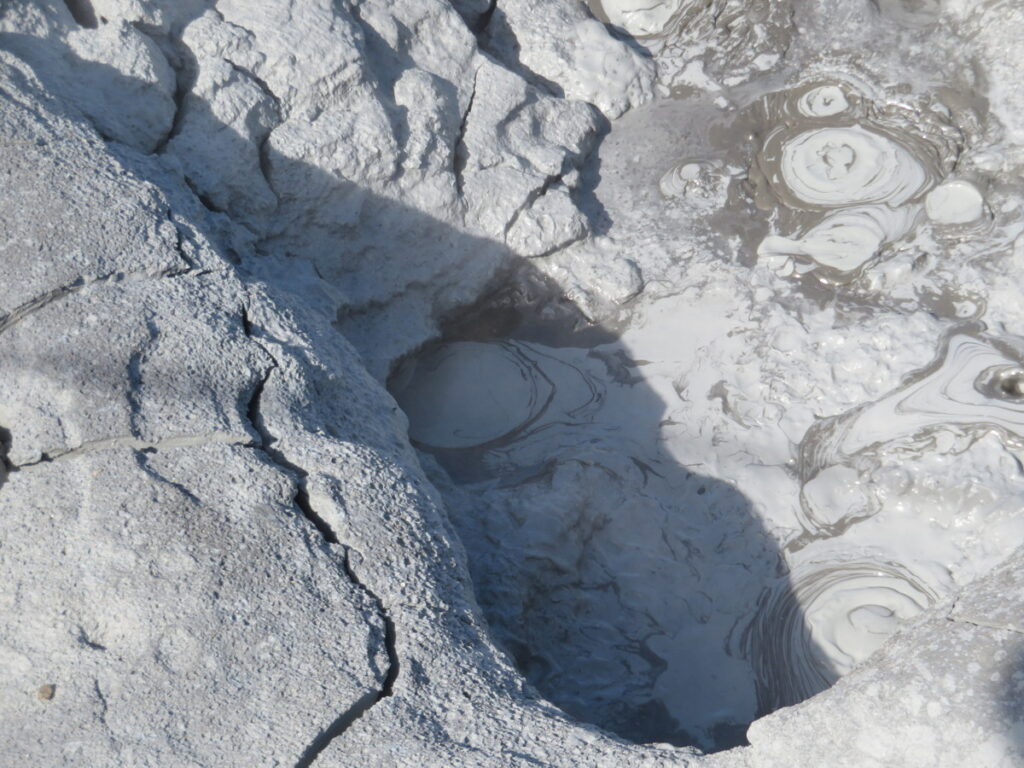
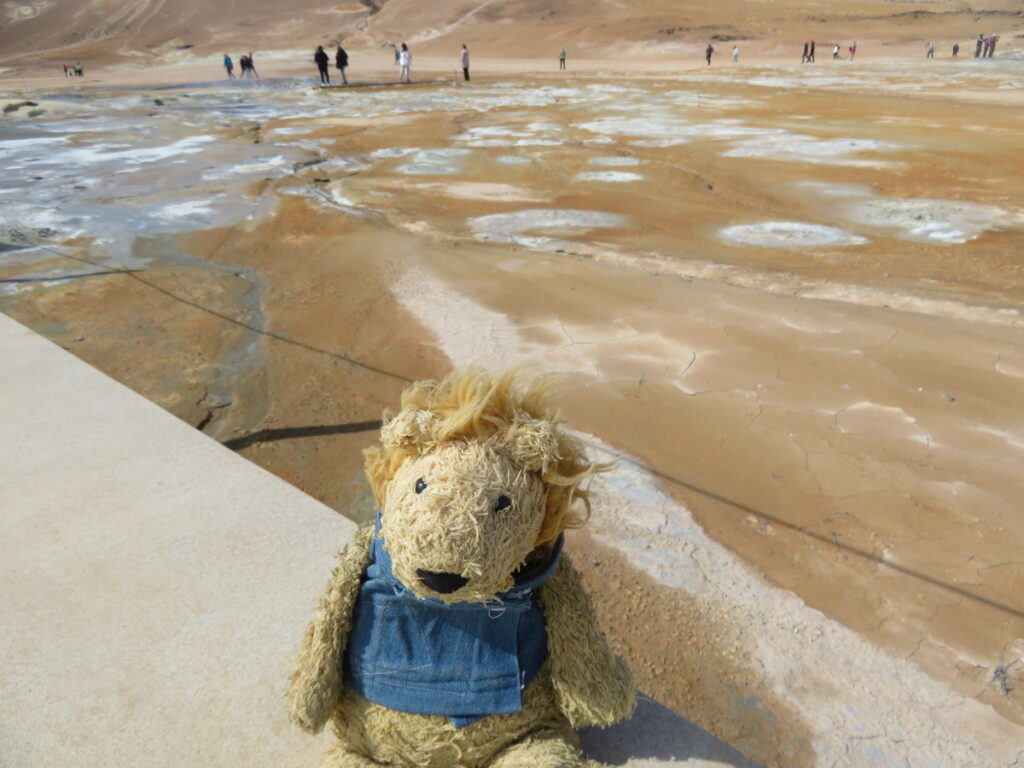

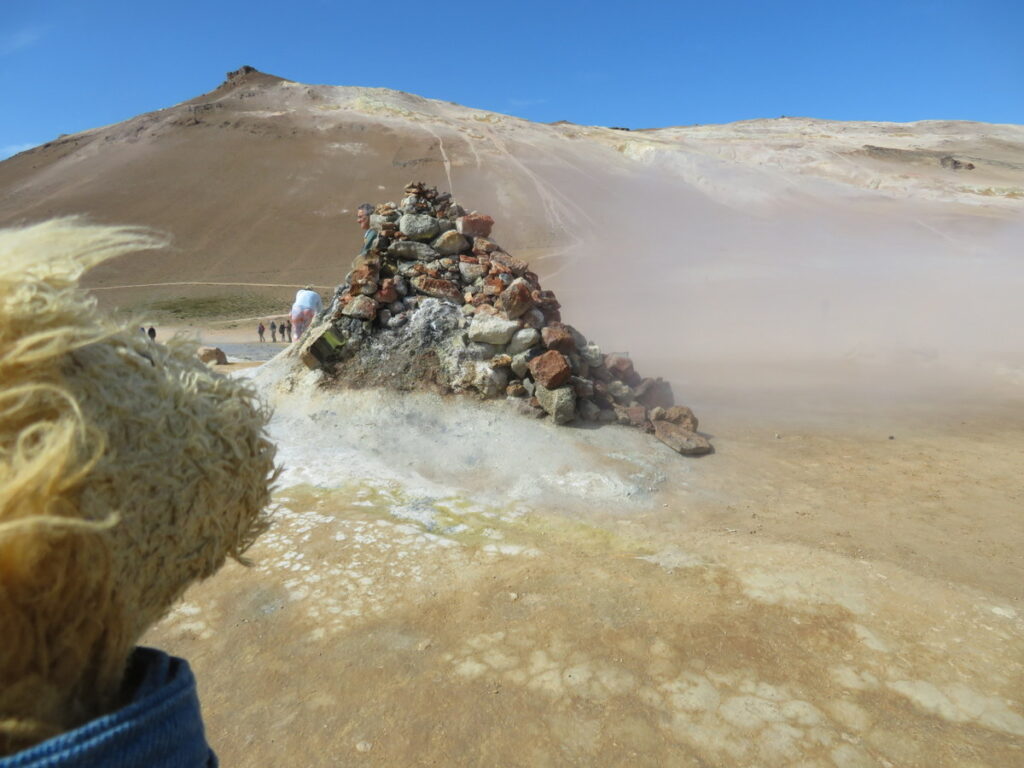
The next spot we visited, Dimmuborgir lava field, showed a different way the energy can come out. Our guide told us that when lava is contained over a lake or pond, the water turns to steam and erupts through the lava. Eventually, it starts taking some lava with it, making spires and other tall shapes. We walked around the yellow trail to see the results. There was one place where I could see the American and European plates were still moving apart!
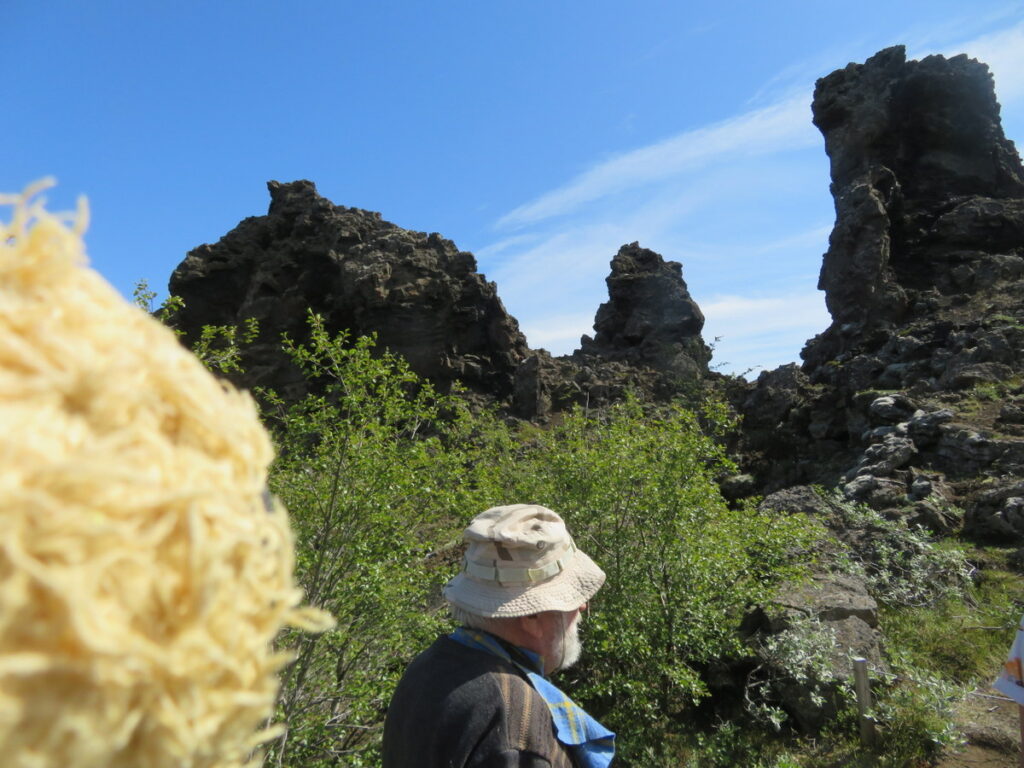
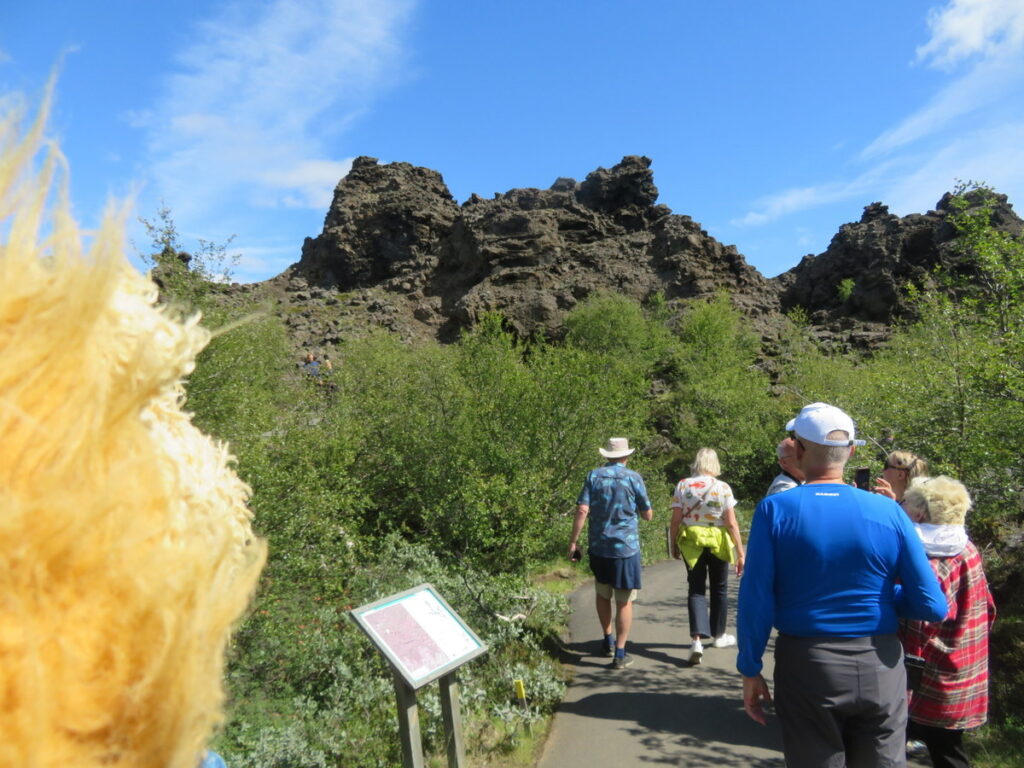
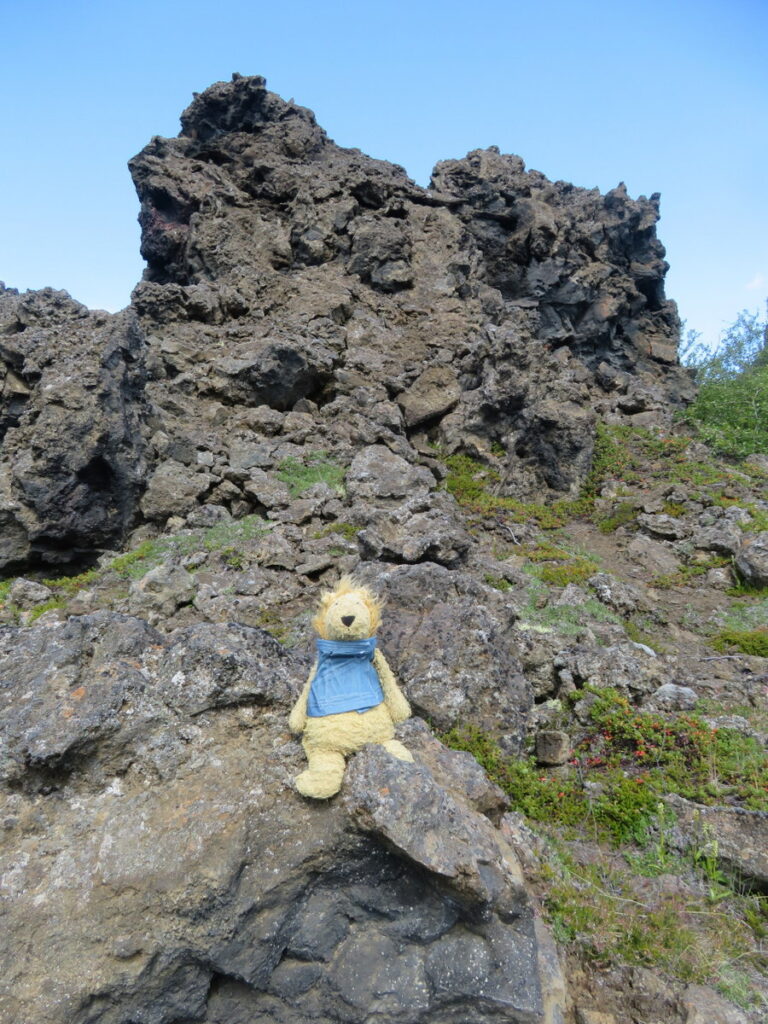
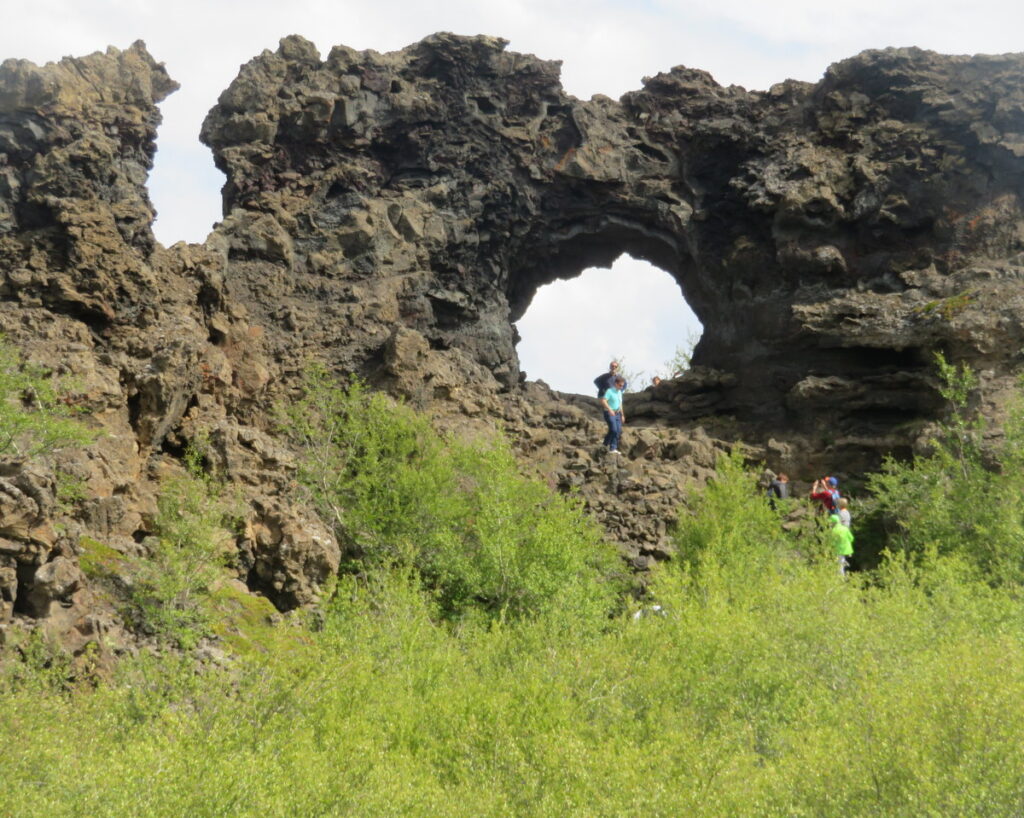
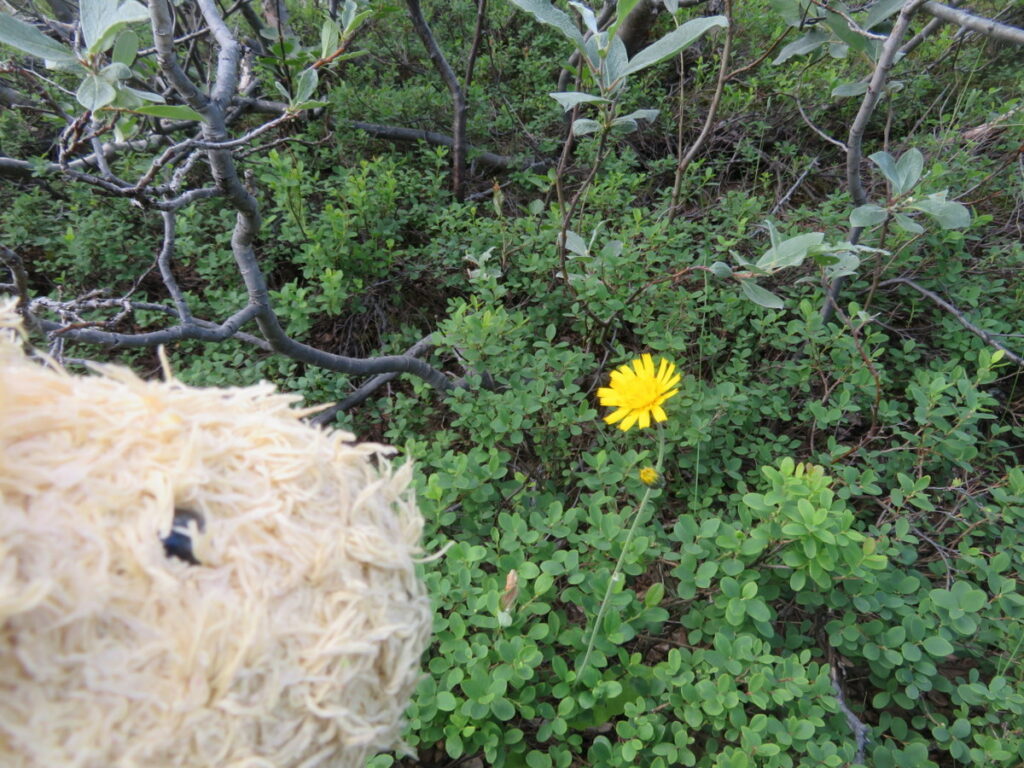
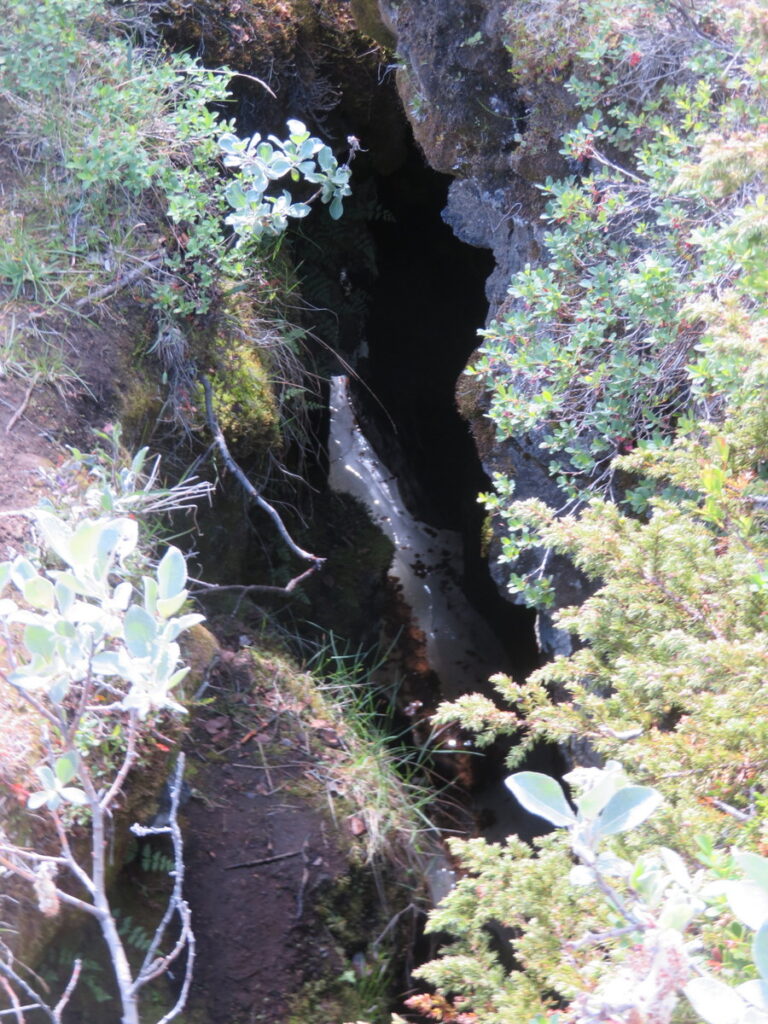
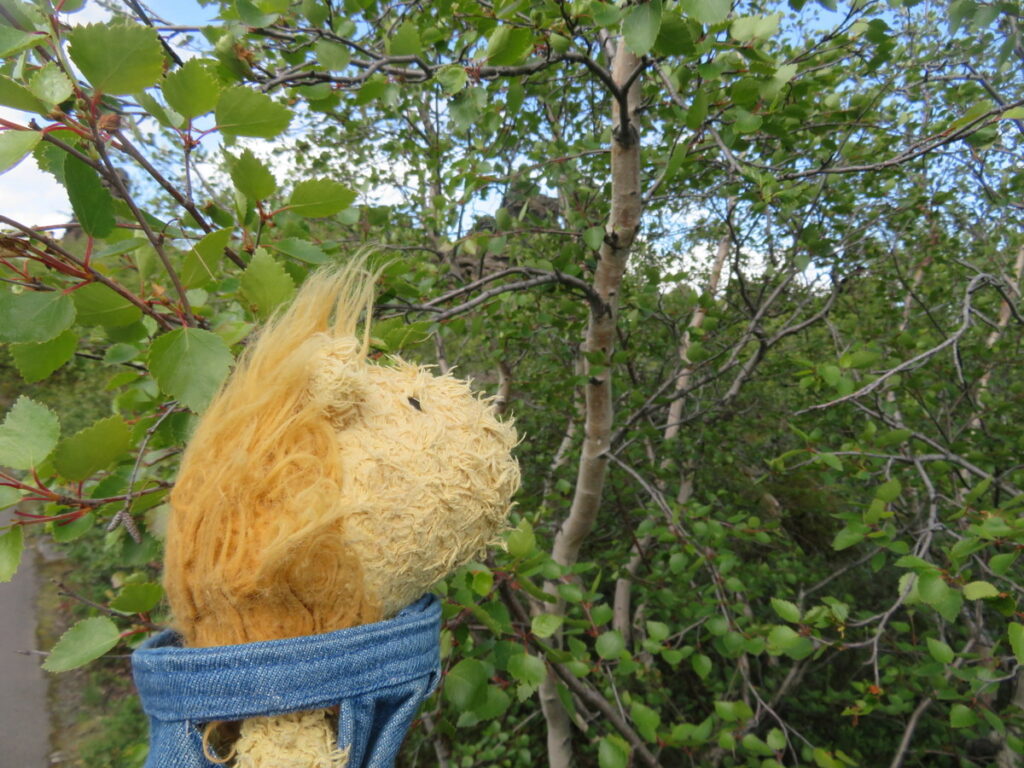
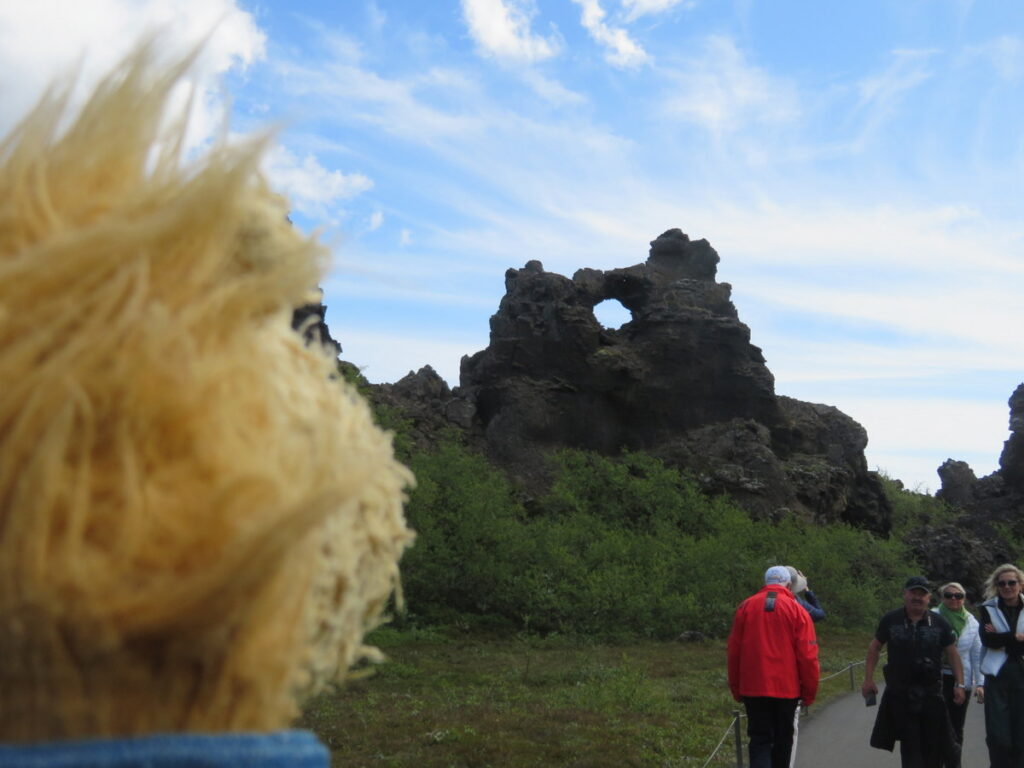
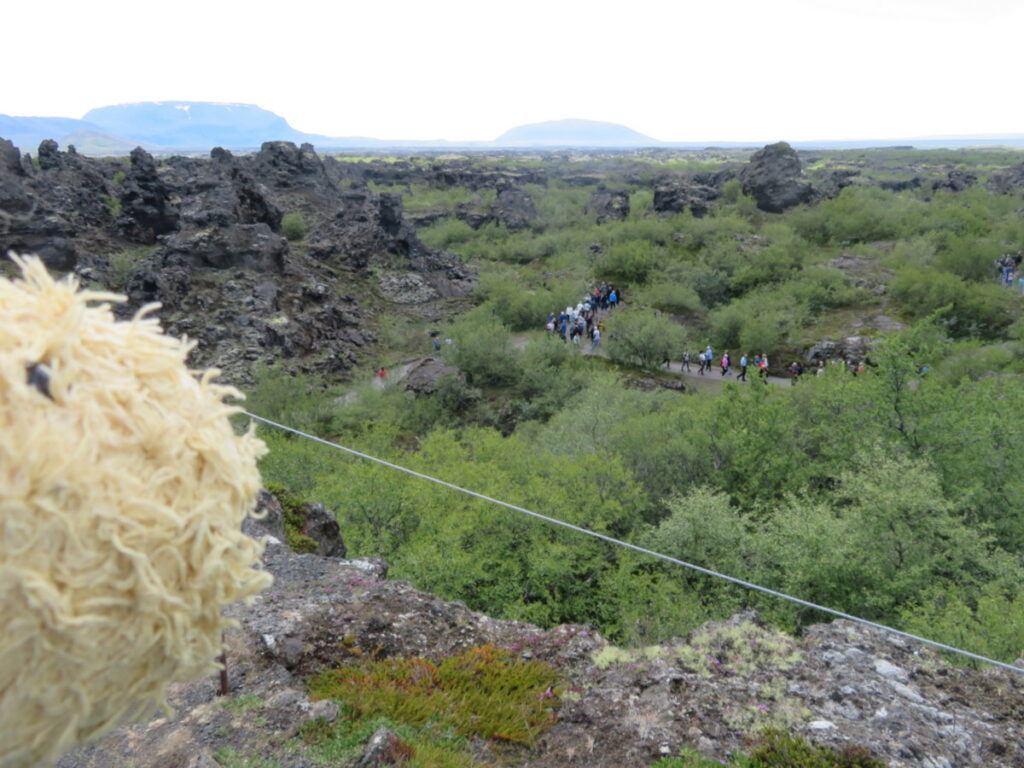
The last place we visited, Skutustadir had a walk around pseudo craters. These were never actually volcanos! Instead, they were places where big steam bubbles popped in volcanic cinder ash. They are surrounded by farmland and we saw horses and hay bales. That was a full day of appreciating volcano power! I was happy to get back on the tour bus!
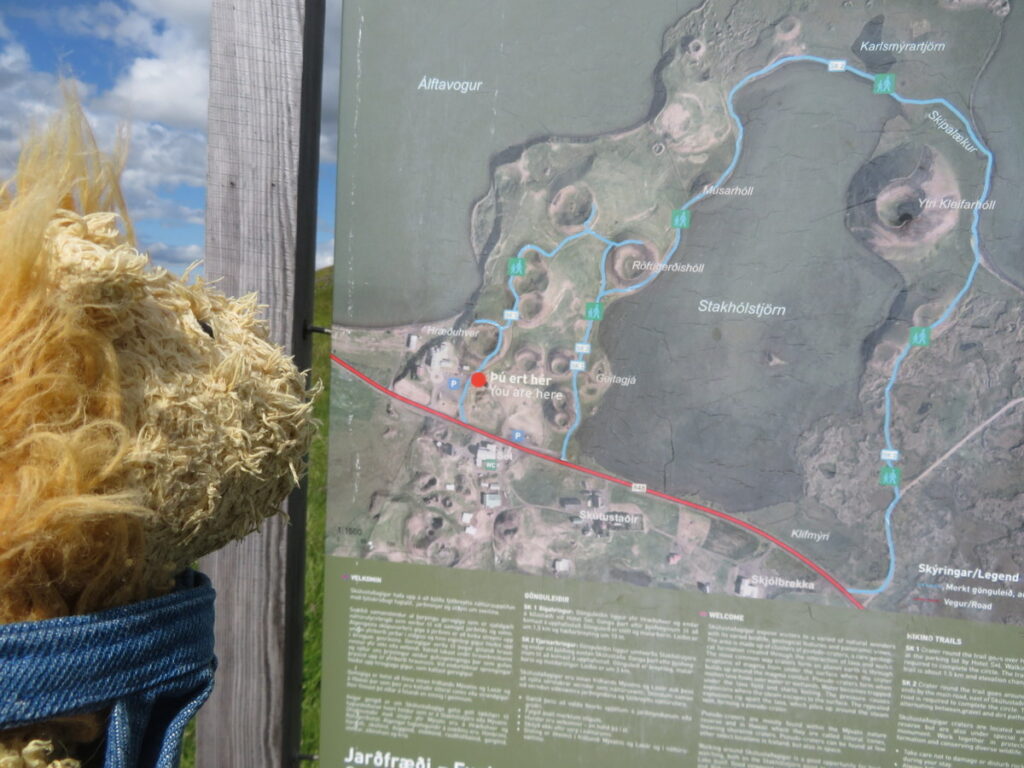
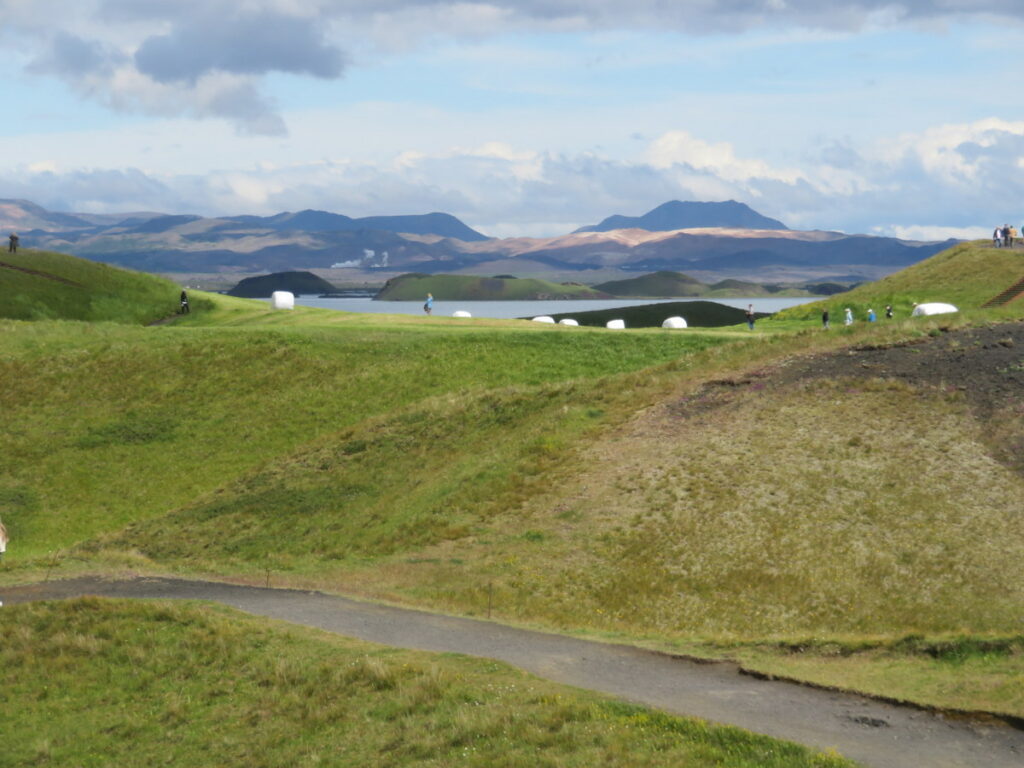
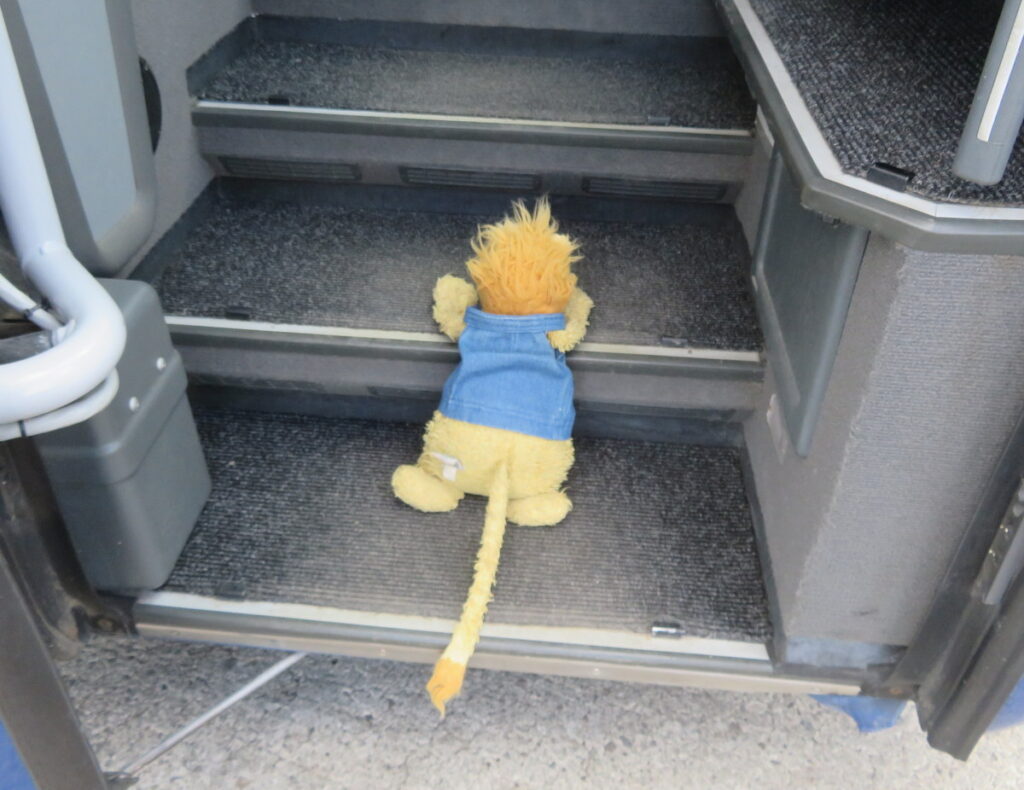
On our return trip, we passed right by Godafoss again. There were still a lot of tour buses there! When we stopped for a photo opportunity across the fjord from Akureyri, lots of other tour buses were there, too! When the tour bus stopped at a traffic light, I noticed that the red light was heart-shaped! Our guide told us the town was covered in red hearts about twenty years ago for an annual festival. Then there was a big financial crisis and all the Icelandic banks failed. It was a very difficult time! People decided to keep the red light hearts as a sign of hope and comfort. I’m glad they did!

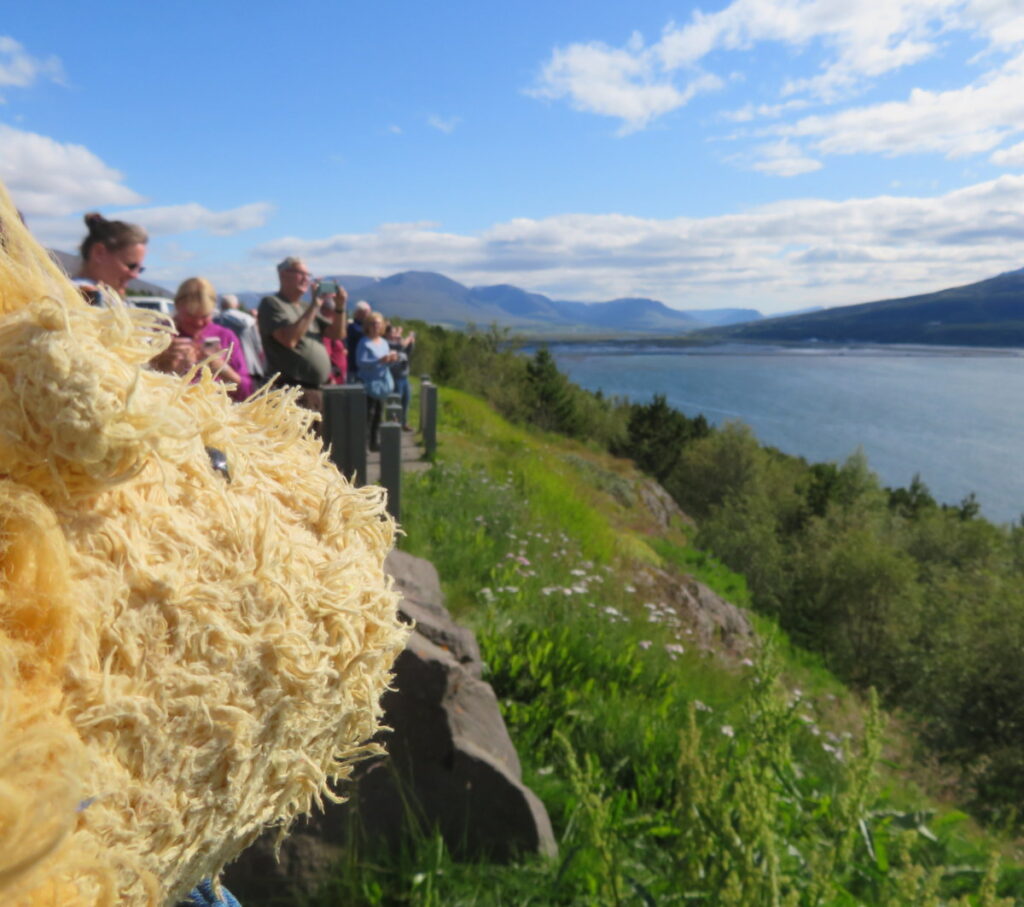
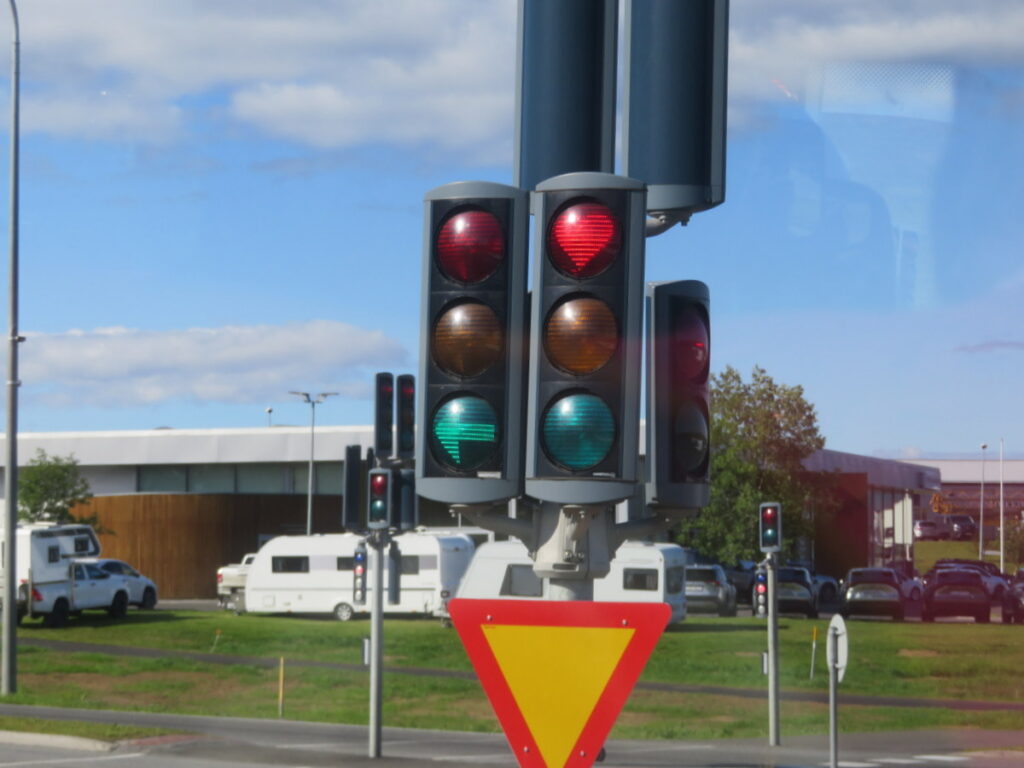
Love,
Lion-san
